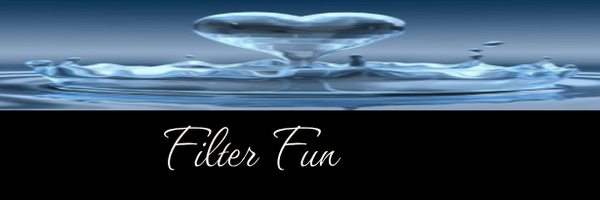Filter Fun
Grade 5
Presentation
Hypothesis
Testable Question:
What type of filter removes the most contaminats from water?
Hypothesis:
If dirt and pool chlorine are put in water then the home made filter will remove the most contaminants because moss and carbon are known to be the best filters.
Research
Definitions:
pH: a measurement of the acidity or alkali of a liquid
Salinity: a measurement of dissolved salt in a liquid
Turbidity: cloudiness of water caused by suspended solid matter
Chlorine: a chemical element often used to clean drinking water
Free Chlorine: the amount of chlorine that hasn’t combined with water to sanitize contaminants such as bacteria and viruses
Combined Chlorine: a type of chlorine that develops when chlorine binds to contaminants in water
Total Chlorine: the amount of free chlorine and combined chlorine
In a Brita filter: coconut based activated carbon
Alkapam: a chemical flocculant that when put in dirty water separates the solids from liquids
In a Lifestraw: hollow fibers that filter water particles without using chemicals
Micron - is unit of measure that is one millionth of a meter. Used to describe the size of water contaminants.
Acidity - the capacity of water to neutralize an alkali. The pH is a measure of the acidity or basicity of a solution.
Alkali - a substance that dissolves in water and results in a pH of 7 or higher
Alkalinity - the measure of how water resists pH change by neutralizing acids and bases.
Salinity - is the measurement of dissolved salts present in water, usually sodium chloride. Measured using electrical conductivity by determining the total dissolved solids. Measured in “PSU” or practical salinity units, “PPT” or parts per thousand, and “TSD” or total dissolved solids.
Fresh water & drinking water salinity - usually have less than 0.5 PPT of dissolved salts. Humans cannot drink over 0.5 ppt salinity.
Sea water salinity - usually has around 35 ppt (there is a hypersaline lake in Antarctica (Don Juan Pond) with a salinity measurement of 400 ppt)!
Reverse osmosis - a water filtering process that pushes contaminated water through a semipermeable membrane under pressure. Also a method of desalination. It is an expensive way to filter water.
Distillation - a process to remove contaminants from by heating it enough to vaporize it then condense the steam back to water again.
Desalination - the process of removing salt from sea water. Reverse osmosis and thermal desalination are the two main types.
UV Sterilization - a process used to destroy viruses, bacteria, and protozoa in water using ultraviolet light.
pH, Alkilinaty and Acidity
What changes pH? Any chemicals, minerals, pollutants, soil, and even temperature. Chlorine usually lowers pH. Dirt can also change pH because it can have carbonate minerals.
Higher temperature water could have a slightly lower pH than the same water at a lower temperature because water of the water self ionizing (water molecules splitting into hydrogen ions and hydroxide ions).
What impact do alkalinity and acidity have on water quality? High alkalinity water can taste different (salty or chalky) and make your skin dry and itchy. It can also cause problems with build up in water pipes. Some people claim that “Alkaline Water” has great health benefits but it has not been well studied. Acidic water doesn’t really affect your health on its own but it can cause erosion of pipes and cause those metals (lead, copper, iron) to leech into the water and make you sick.
Some experts (US Environmental Protection Agency) say drinking water should have a pH of 6.5 - 8.5 while others (Health Canada) say it shoud be between 7.0 -10.5.
pH and turbidity
There are different ways to measure pH. The most common are test strips (which were used during this experiment) or a pH meter.
Tests strips are the least accurate but cheapest option. They are a disposable strip with indicators that change color when dipped in water. The indicators react with the hydrogen ions making the color change according to the pH. I used test strips because they were not as much money and were easy to get. While they are not as accurate, they still give good results especially when doing multiple trials. Another issue is different people can interpret the colors differently and the strips change color after they dry. They can also expire and degrade over time.
A pH meter is the most accurate but also expensive and needs to be calibrated before and after using it. A pH meter can give more exact results with more precise increments than the test strips. pH meters need to be cared for and stored. They are very delicate.
Turbidity is caused by sand, silt, dirt, metals, bacteria, algae, organic matter. It is measured in NTUs (nephelometric turbidity units). This measures how light disperses in a water sample compared to a reference sample (clean water). Safe drinking water should be 1.0 NTU or less.
Turbid water can cause serious health problems because the turbidity gives nutrients and shelter to pathogens that can cause waterborne disease. Viruses, bacteria, and parasites such as salmonella, cholera, E. coli, enterobacter, noroviruses and rotaviruses can attach to the suspended particles in turbid water and be protected from disinfectants such as chlorine.
Chlorine has been used to disinfect drinking water since 1908. Since then there was a large reduction in water borne illnesses. It is a chemical that kills many types of bacteria, viruses and parasites. Chlorine gas, sodium hypochlorite (bleach), and calcium hypochlorite are the most commonly used chlorines in water treatment. Adding chlorine (chlorination) is the final water treatment step. The safe level of chlorine in drinking water is 4 parts per million. Too high chlorine levels can cause respiratory, digestive issues and can potentially cause cancer. It will also affect the taste and smell of the water.
The Brita
A Brita filter is a filter that fits into a pitcher to filter tap water further by removing chlorine taste/odor and other contaminants. The filter is made of plastic and has a mesh screen with activated carbon and an ion exchange resin inside.
Activated carbon is a very porous substance that attracts and holds onto organic chemicals. It is made from burning something high in carbon (wood, coal, meteorites) without oxygen to make a “char”. Then the “char” is treated to make it porous.
Ion exchange resin is a porous bead like material that exchanges ions with the same charge between a contaminate and water.
The Brita filter works by filtering water through the mesh, activated carbon and ion exchange resin. The activated carbon is like a sponge and absorbs things like mercury and chlorine. The ion exchange resin captures things like copper, zinc and cadmium.
A Brita filter costs $19.97 on amazon and comes with 1 pitcher and 1 filter.
The LifeStraw
A LifeStraw is a portable water filter that is like a straw. It has hollow fibers made from BPA free polymers inside that act as a membrane to filter dirt, microplastics, bacteria and parasites.
A LifeStraw costs $37.00 and can filter 4000 liters (approximately 5 years). LifeStraw also has high capacity filters for emergency and humanitarian purposes.
Flocculants
A flocculant is a product used to remove any matter suspended in water. They are used in the oilpatch as a drilling fluid additive. It is also used in water treatment to remove suspended solids, pollutants and minerals. A flocculant works by neutralizing negative charges on the suspended particles to get them to clump together and separate from the water. The brand I used is called Alkapam. It is a polyacrylamide based polymer. It looks like a white powder. The cost of Alkapam can change depending on the quality and supplier. It is also not easily acquired, I got a free sample because of my dads job. A rough cost estimate is $2.70 for 2lbs. It is usually sold in 25kg bags. I only used ⅛ of a teaspoon!
Homemade Filter
I chose these specific materials (cheese cloth, sphagnum moss, gravel, sand (coarse & fine), activated carbon and coffee filters) because they each have a specific filtering capability.
- Cheese cloth - traps solid particles at 15 to 50 microns. (I also used it to hold the materials in the bottle)
- Sphagnum moss - is a naturally growing moss in Canada, USA, and New Zealand. It has an anti-microbial properties and the ability to absorb chemicals. It also reduces alkalinity. Works well when used with activated carbon.
- Gravel - traps solid particles
- Sand (coarse & fine) - has been used for thousands of years as a water filtrant. It traps solid particles (such as algae and dirt).
- Activated carbon - can filter pesticides, chlorine, metals, bacteria, and virus through absorption
- Coffee filters - used to separate the layers in the filter. Can also trap solid particles at 10 to 20 microns.
Homemade Filter Cost
2L bottle - most people would have empty ones at home but a 2L pop/water bottle costs about $2.79.
Elastic band - again, most people would have these at home but a bag of 310 elastic costs $8.20 so about $0.03.
Cheese cloth - 9 square feet is $8.49 and I used about 1 square foot (folded over) so the costs is about $0.94.
Sphagnum moss - 5oz is $14.99, I used about a quarter of it for a 2L bottle so $3.75.
Gravel - I got this from my backyard but if you had to buy gravel it would be about $4.00.
Sand coarse - a 5lb bag of play sand is $9.99 so 1 cup is about $1.50.
Sand fine - a 4lb bag of fine sand is $19.99 so 1 cup is about $5.00.
Activated carbon - a 3 pack is $11.97, I used 1.5 so $5.99.
Coffee filters - a package of 100 filters is $2.50. I used 4 for the 2L bottle so $0.01.
The total cost per filter is $24.01 if you have to buy all of the materials.
Total Water Quality
Total water quality - is the amount of contaminants in water, overall characteristics of water. There are guidelines and rules set for maintaining drinking water quality in Canada and other countries.
Water contaminants - physical, chemical, biological, or radiological substances or matter present in water that negatively affect its quality and safety. Some contaminates you can see, taste or smell but a lot you can’t.
Physical water contaminants - mostly affects the physical appearance of water. Examples are sediment/dirt and other organic material such as leaves.
Filtering physical contaminants - the best way to filter physical contaminants is with activated carbon filters, alternate ways would be sphagnum moss or sand.
Chemical water contaminants - elements or compounds that can be natural or manmade. Nitrogen, chlorine, fluoride, pesticides, metals.
Filtering chemical contaminants - reverse osmosis and distillation are the best ways for removing chemical contaminants.
Biological water contaminants - organisms in the water. Can be bacteria, viruses, protozoa and parasites.
Filtering biological contaminants - the best filter for biological (bacteria/virus) contaminants is distillation, reverse osmosis and UV sterilization. A cheaper, more available option is boiling water.
Radiological water contaminants - chemical elements in water that are radioactive. This is uncommon in Canada. Examples include plutonium and uranium.
Filtering radiological contaminants - reverse osmosis is the best way to filter radioactive water contaminants. Activated carbon also removes radioactive contaminants but is not as effective.
Water borne disease - diseases people get from drinking contaminated or poorly filtered water. Examples are cholera, hepatitis A, typhoid, and polio.
How Water Gets Contaminated
In Canada and the United states water contamination usually comes from agricultural runoff, industrial waste, municipal waste, spills and accidents, and naturally occurring contaminants in rocks and soil.
- Agricultural runoff - pesticides and fertilizers can get into lakes and rivers. Excess nitrogen and phosphorus (from fertilizers) can cause toxic algae to overgrow
- Industrial waste - factories and plants can release toxic wastewater containing heavy metals and chemicals
- Municipal waste - untreated or poorly treated sewage or systems that aren’t working properly can contaminate water
- Spills and accidents - oil or chemical spills can contaminate water
- Naturally occurring contaminants - radon and arsenic naturally occur in rocks and soil and can leach into water
In developing countries, water contamination usually comes from poor sanitation practices, poor infrastructure, industrial and agricultural runoff and flooding.
- Poor sanitation - lack of access to proper toilets leads to human waste contaminating water
- Poor infrastructure - damage or poorly maintained pipes and well can allow contaminants into water. Lack of water treatment facilities or water quality standards
- Industrial and agricultural runoff - pesticides, fertilizers, and toxic waste can get released into waterways
- Flooding - can spread sewage and other contaminants
Calgary Water Main Break
n June 2024, there was a large water main break in Calgary. This water main was the biggest pipe and distributes nearly 60% of the cities treated water. Additional damage was found and also needed to be repaired. The City of Calgary put water restrictions on including restrictions on watering lawns/gardens, washing cars, filling pools/closing city pools, limiting shower time, delaying dishwasher and washing machines.
A lot of Calgarians experienced reduced water pressure and dirty water. The City issued a boil-water advisory for certain communities because of a loss of water pressure that can allow contaminants to enter the water system. When the water was turned back on, a lot of residents complained that it was turbid.
Using a LifeStraw or homemade filter could have been beneficial during this time. Not only to filter the water that was coming through the tap but also to have the option to filter water found in streams or rivers outside of Calgary.
Facts
- There is a hypersaline lake in Antarctica (Don Juan Pond) with a salinity measurement of 400 ppt. Humans can’t drink over 0.5 ppt salinity water.
- Higher temperature water could have a slightly lower pH than the same water at a lower temperature because water of the water self ionizing (water molecules splitting into hydrogen ions and hydroxide ions).
- UNICEF reports show that approximately 829,000 people die to disease from unsafe drinking water each year.
Variables
|
Manipulated Variable |
The Filter type |
|
Controlled Variables |
Contaminated water (water source (tap), contaminants (garden dirt and pool chlorine), measurement tool (pitcher), temperature, agitation) Amount of water going through filter Water testing kit Visual inspector (Blake) and inspection criteria (visual appearance, turbidity, smell, pH, free & total chlorine) |
|
Responding Variable |
Visual appearance (color, any matter floating, sunk or suspended?) Turbidity Smell pH measurement Chlorine (free and total) measurements |
|
Controlled Variable |
How/why I kept it the same |
|
Contaminated water (source - tap) |
The same source was used and kept the same to ensure accurate and fair testing. Making sure all the water had the same things in it so each filter is filtering the same things |
|
Contaminants (garden dirt, pool chlorine) |
The same contaminants were used to ensure accurate and fair testing. Using different types or amounts of contaminants could make filters seem better or worse |
|
Measurement tool (pitcher), water temperature, agitation |
The same pitchers, stir sticks (agitation) and water temperature were used to ensure each filter got the same contaminated water sample. |
|
Amount of water going through filter |
1 liter of water was poured through each filter to ensure a good sample and that the filters were all tested the same |
|
Water testing kit |
The same testing kit (test strips, turbidity chart) was used to make sure the test results were all being collected equally. Different tests can test things differently. |
|
Visual inspector (Blake) |
The same visual inspector (me) was used for each test, each time. Different people can see different things and could interpret or judge them differently. |
|
Inspection criteria (visual appearance, turbidity, smell, pH, free & total chlorine) five times. |
The same testing criteria was used so the results were equally and fairly measured. The results from each filter wouldn’t be fairly or accurately interpreted if they weren’t compared with the same inspection criteria. |
By keeping the controlled variables the same, I can know that any changes in the responding variables are from the manipulated variable (different filters) and make my experiment more valid.
Procedure
Procedure for Contaminating Water
- First take your bucket, water, chlorine, and dirt
- Run tap water until it reads 40 degrees celsius on the thermometer
- Measure 25 liters of water at 40 degrees celsius and pour into bucket
- Test the water with the water test kit and record results
- Take chlorine, use plastic measuring spoons, measure ¼ teaspoon plus ⅛ teaspoon of chlorine
- Slowly add the chlorine granule into the bucket
- Stir mixture with stir-stick
- Then take the dirt, pour enough dirt in one of the cups with measurements until you reach 1 ½ cups of dirt
- Pour the 1 ½ cups of dirt into the bucket
- Stir the mixture with stir-sticks
- Let water cool to room temperature before using with filters (20-22 degrees celsius)
- After all is done you will have successfully made contaminated water
- Test the water with the water test kit and record results
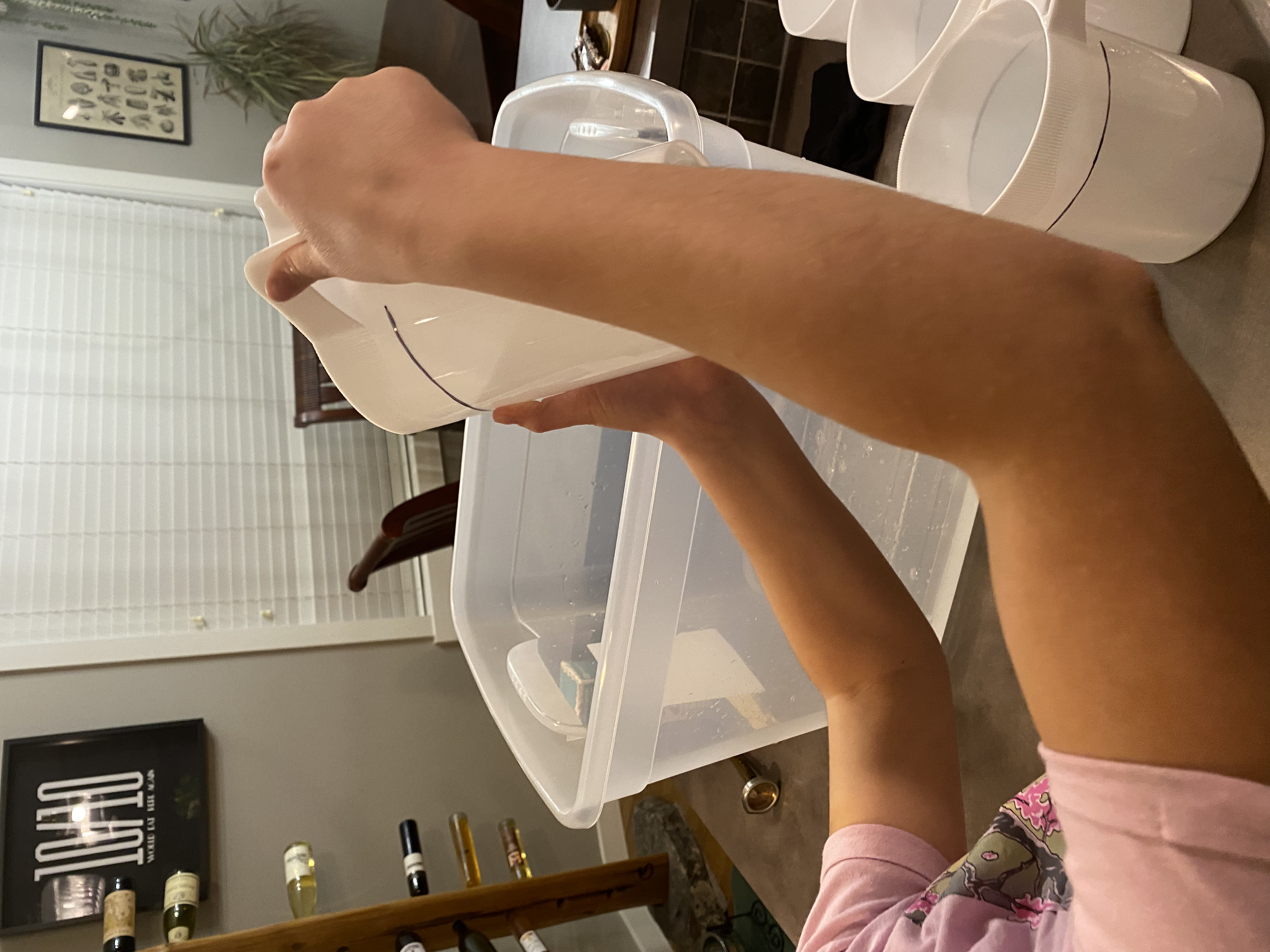
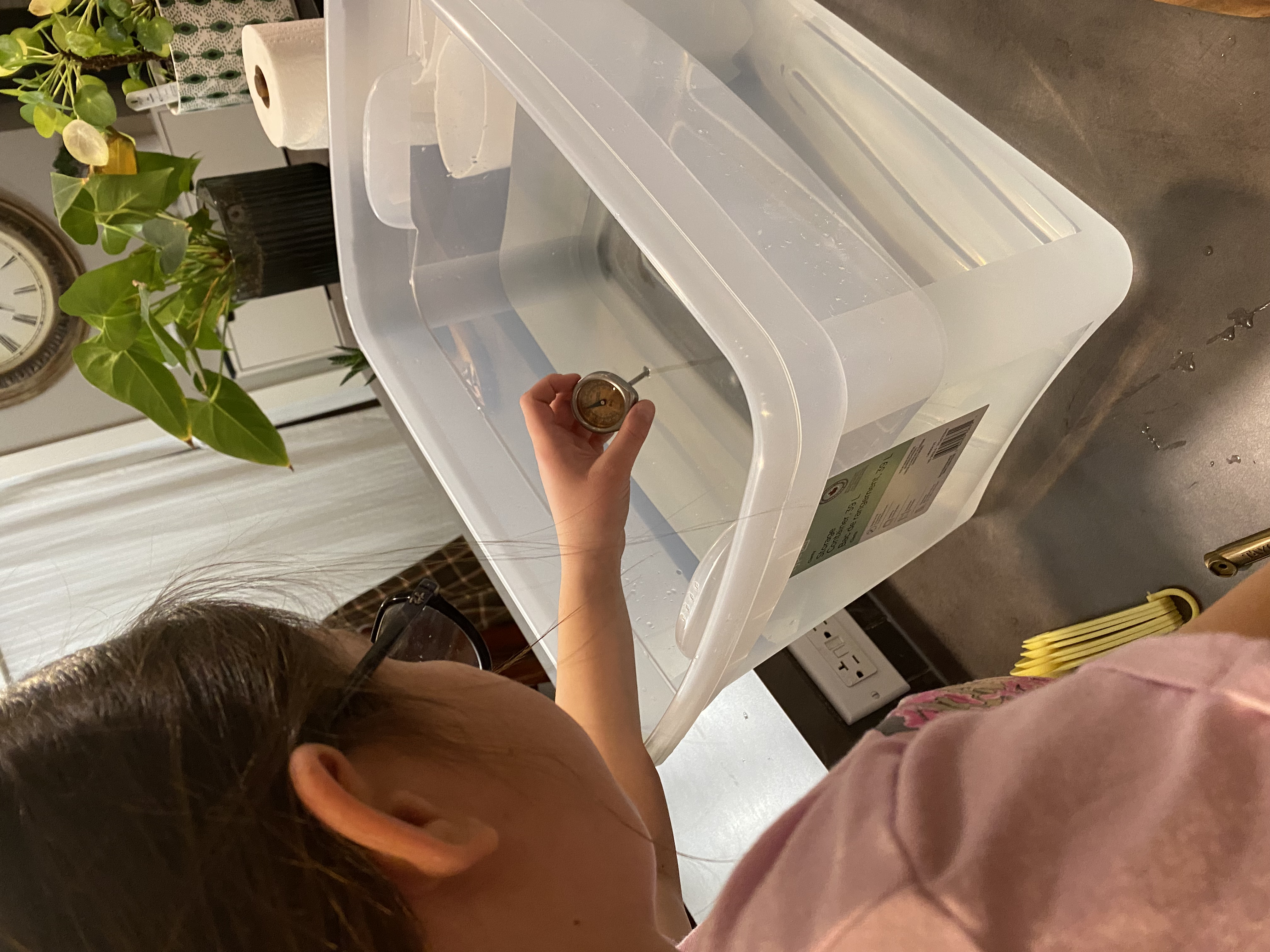
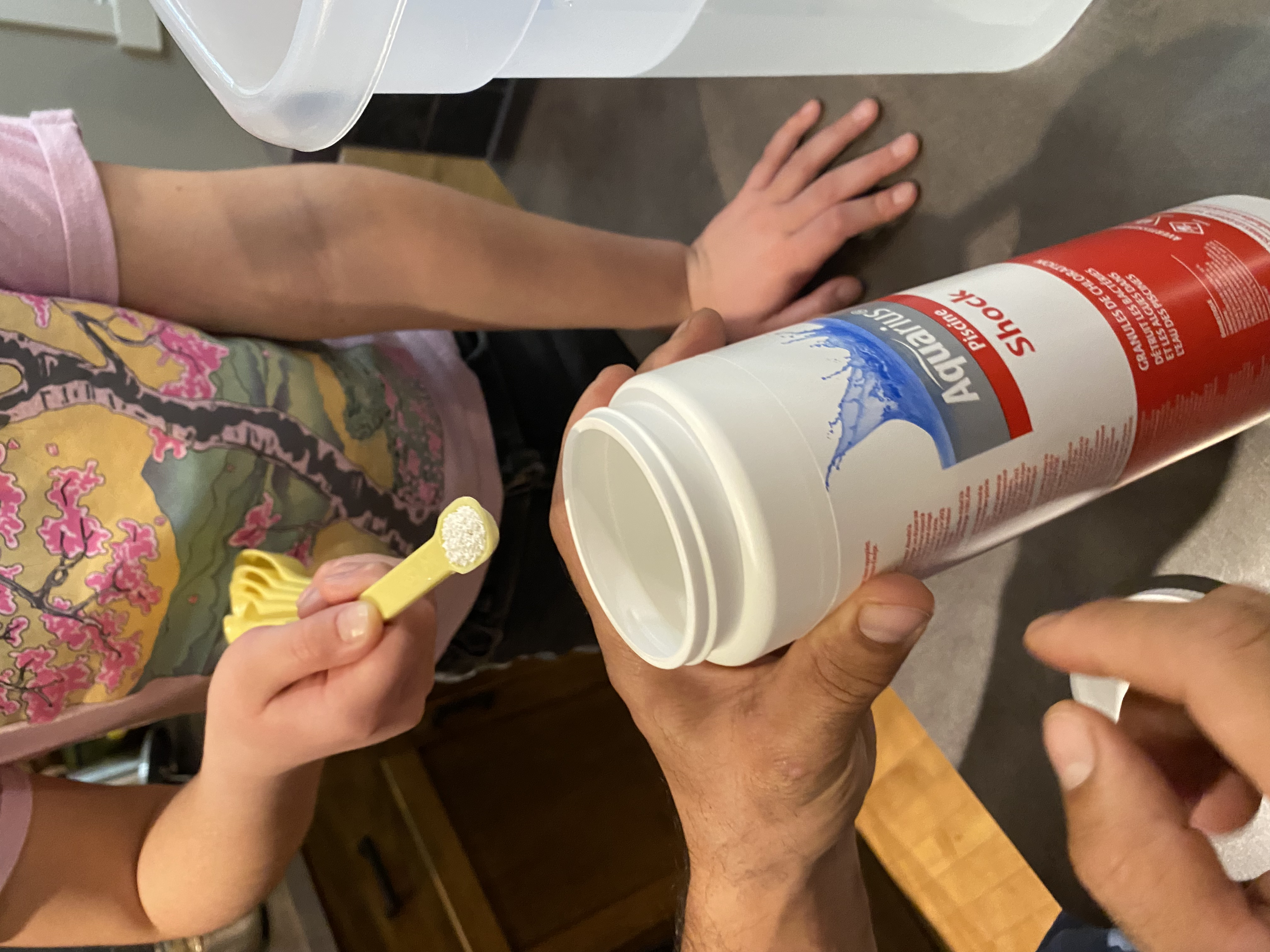
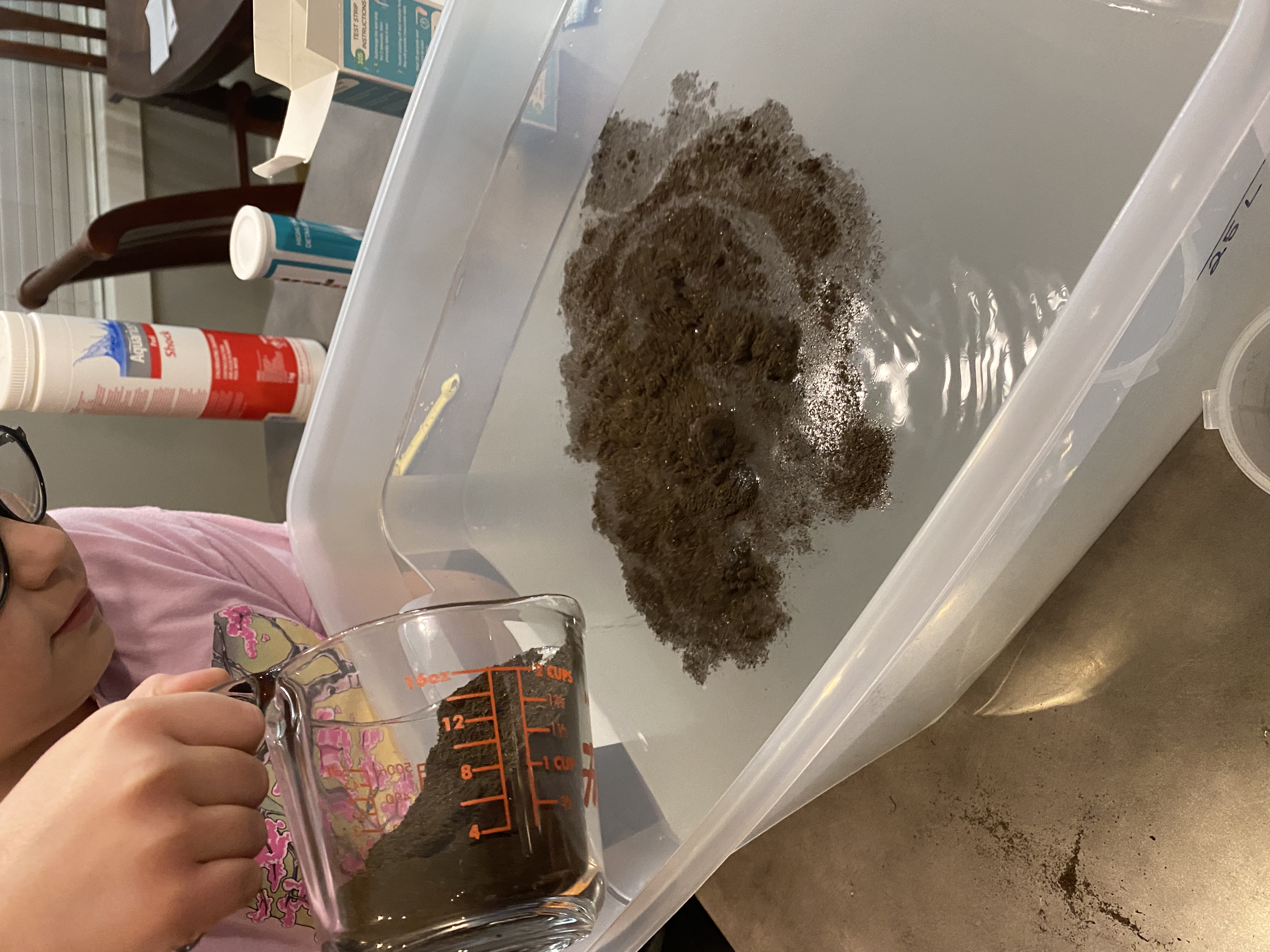
Procedure for Making Homemade Filter
- First take 2 liter pop/water bottle, coffee filters, sphagnum moss, gravel, course sand, fine sand, charcoal/carbon and a exacto knife
- Rehydrate the sphagnum moss in a bowl with water
- Wash gravel with tap underneath a strainer until water runs clean
- Use the Exacto knife to cut of the bottom of the 2 liter pop/water bottle
- Take the cap off
- Put a small piece of cheese cloth on the part where the cap should be (cut to size)
- Put a elastic band around the cheese cloth so it stays on the bottle
- Put sphagnum moss into the bottle then cover with a coffee filter
- Then put 1 cup of fine sand in the bottle
- Put a layer of moss and a coffee filter
- Then add 1 cup charcoal/carbon
- Add another layer of moss and one coffee filter
- Add 1 cup of course sand
- Then yet another layer of moss and a coffee filter
- Add 1 cup of rocks/gravel
- Lastly add more sphagnum moss to fill bottle
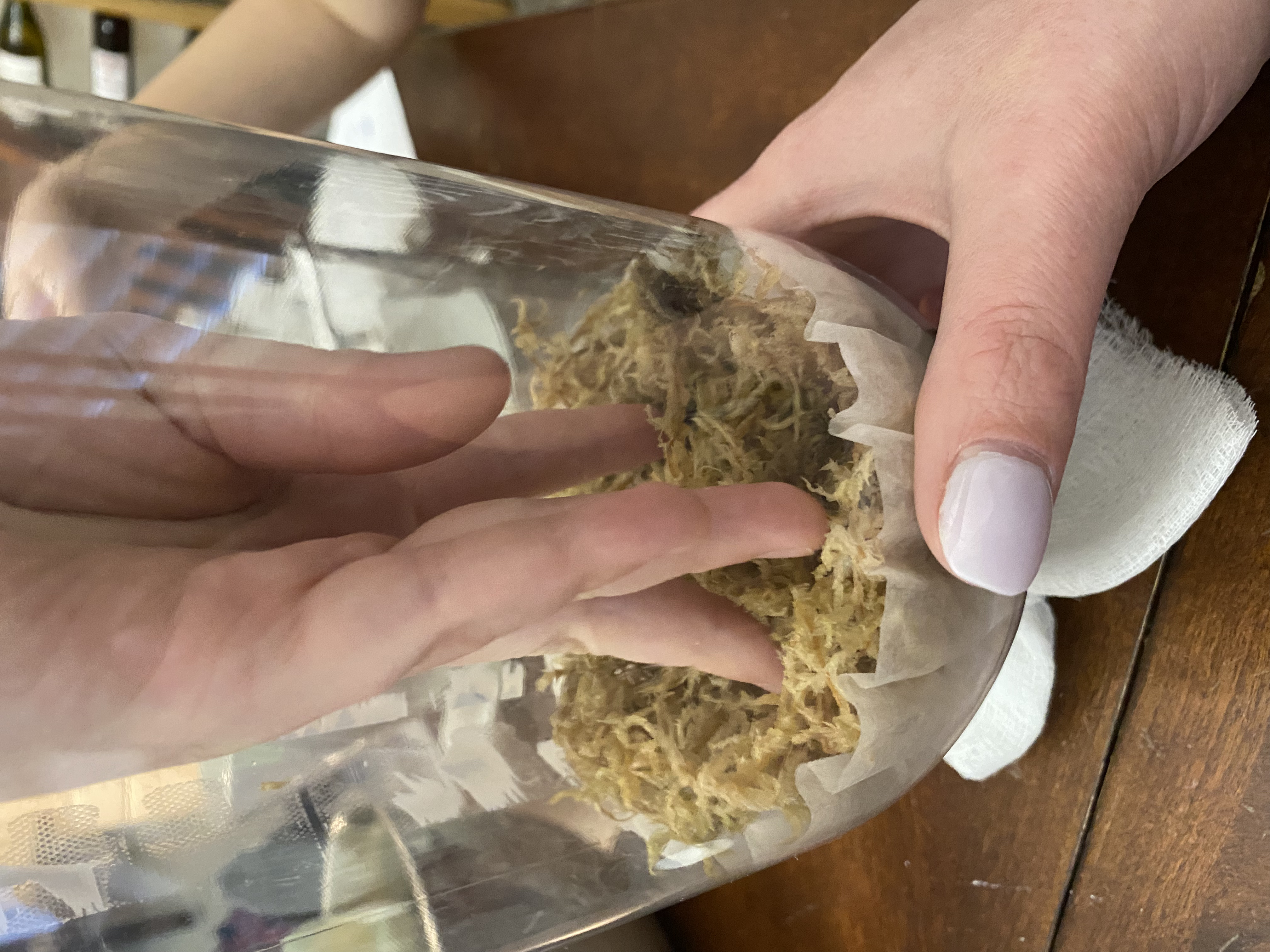
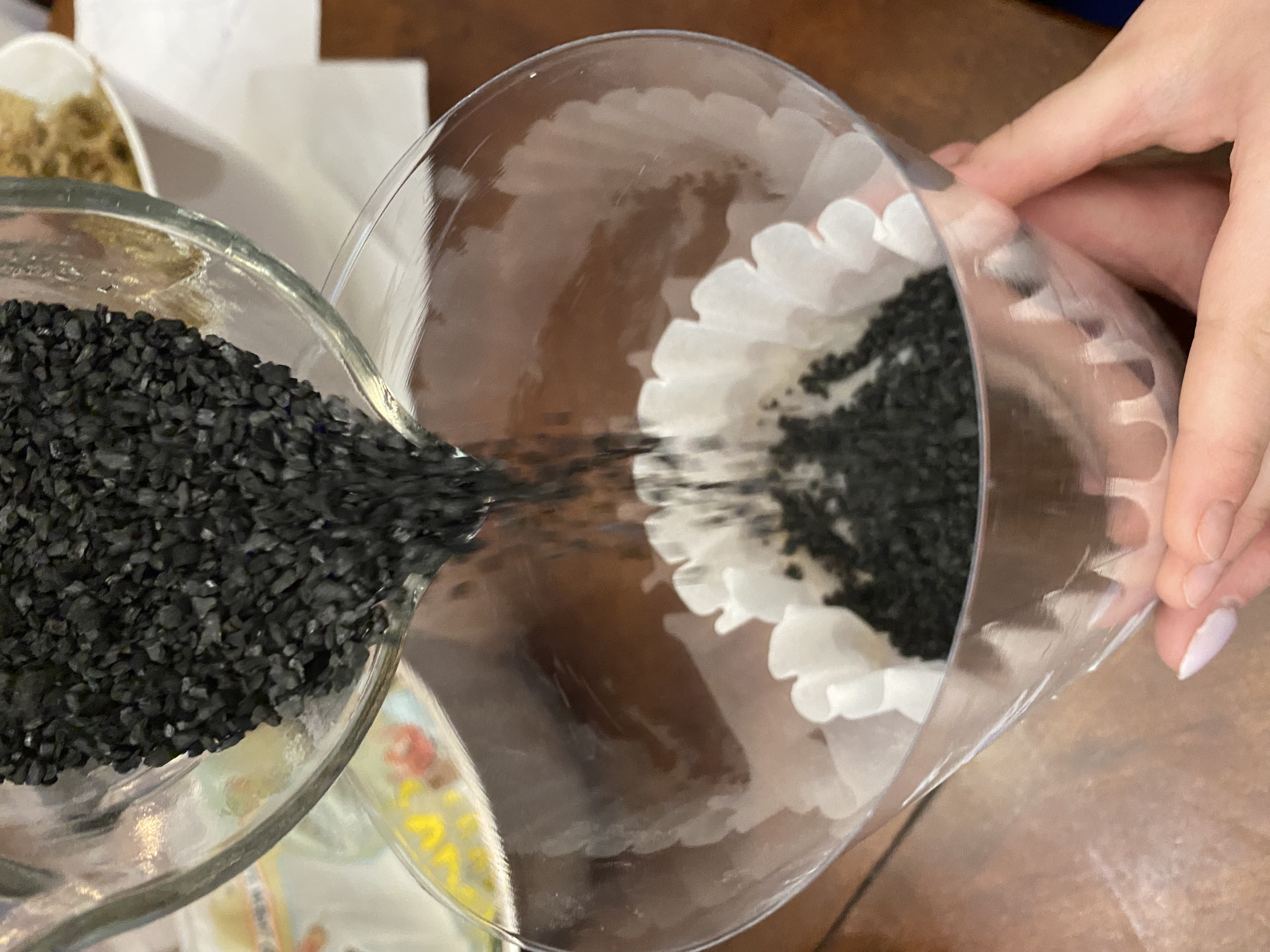
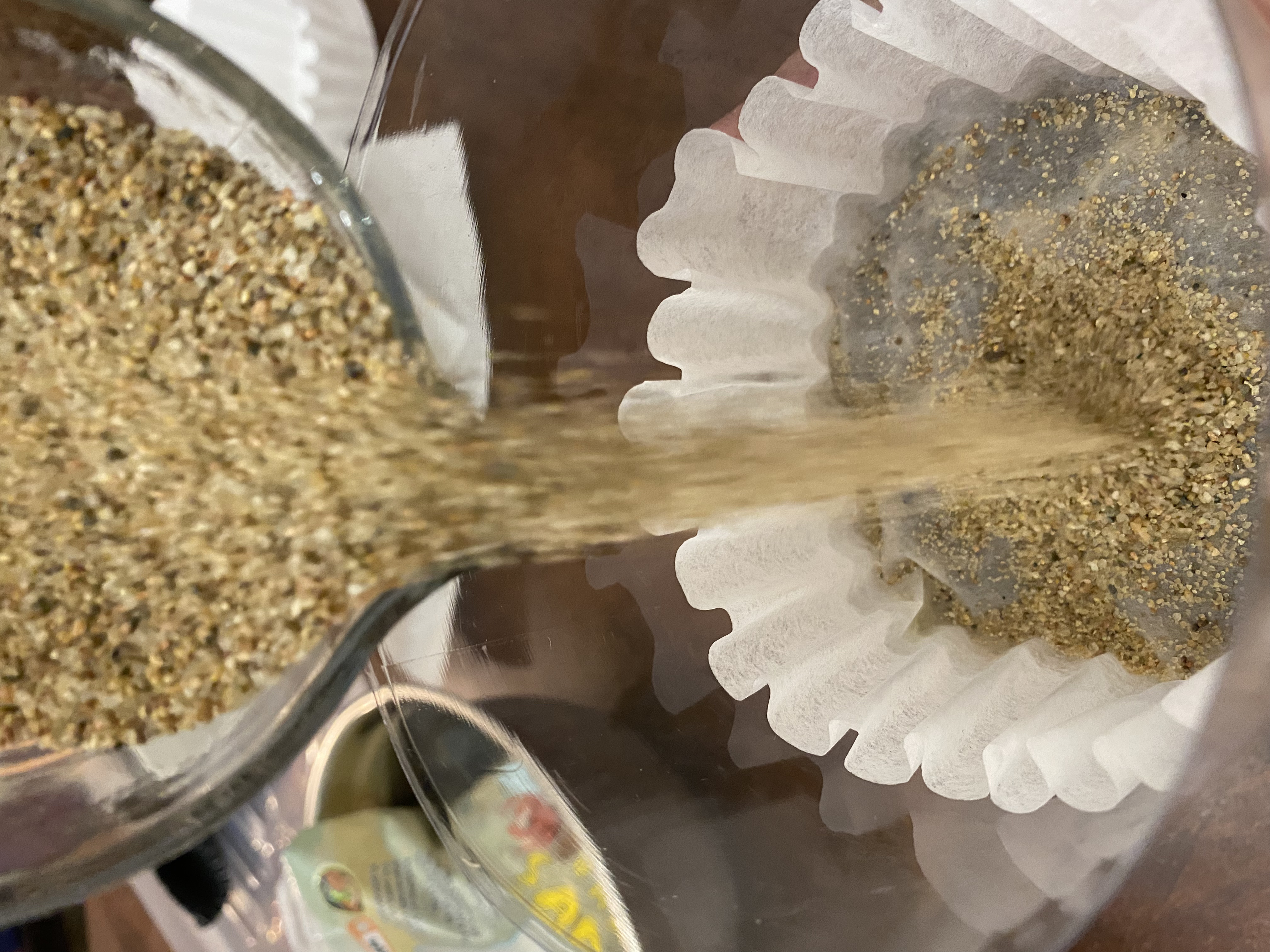
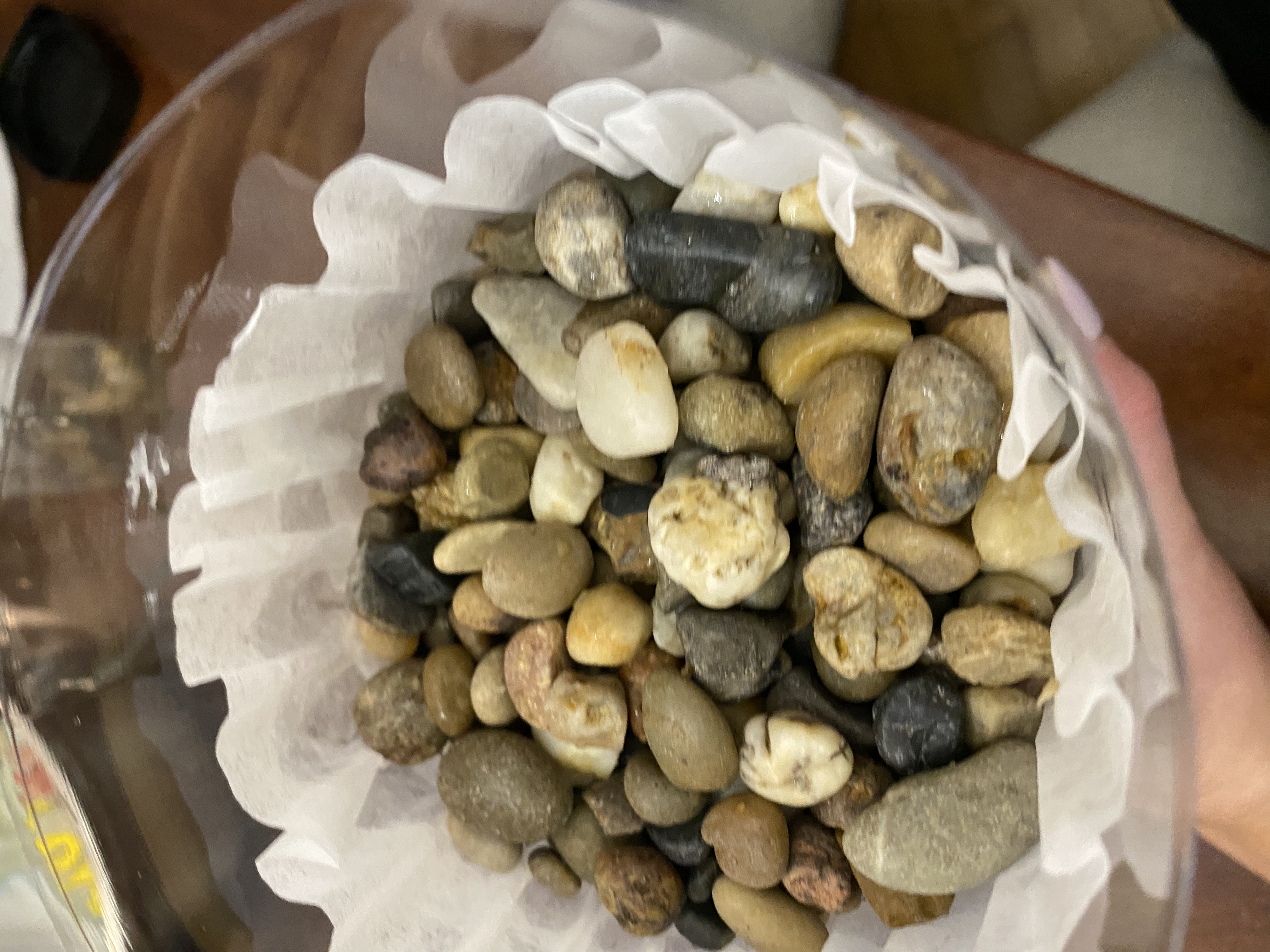
Procedure for Using Homemade Filter
- Stir contaminated water well
- Measure one liter of water from the bucket of contaminated water using the pitcher
- Put the home made filter on the one liter cup with measurements
- Hold onto the homemade filter
- Slowly pour the one liter of water in the bottom of the bottle where it got cut off
- The water should come out of the top of the bottle where the cheese cloth is
- When all the water has filtered through and is in the cup, put it aside and put a label on the cup so what filter it went though is not forgotten
- Test the water (see procedure for testing water)
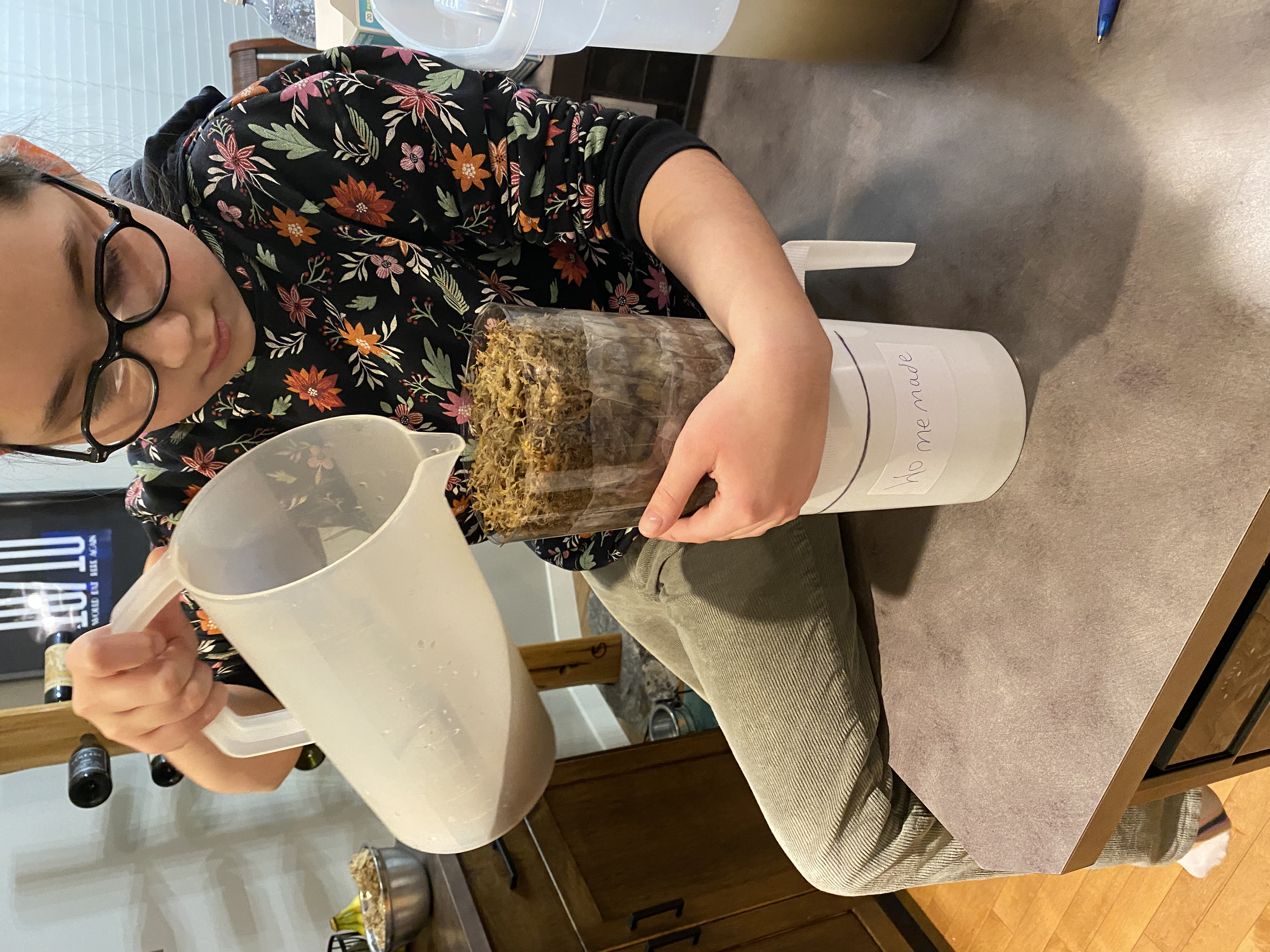
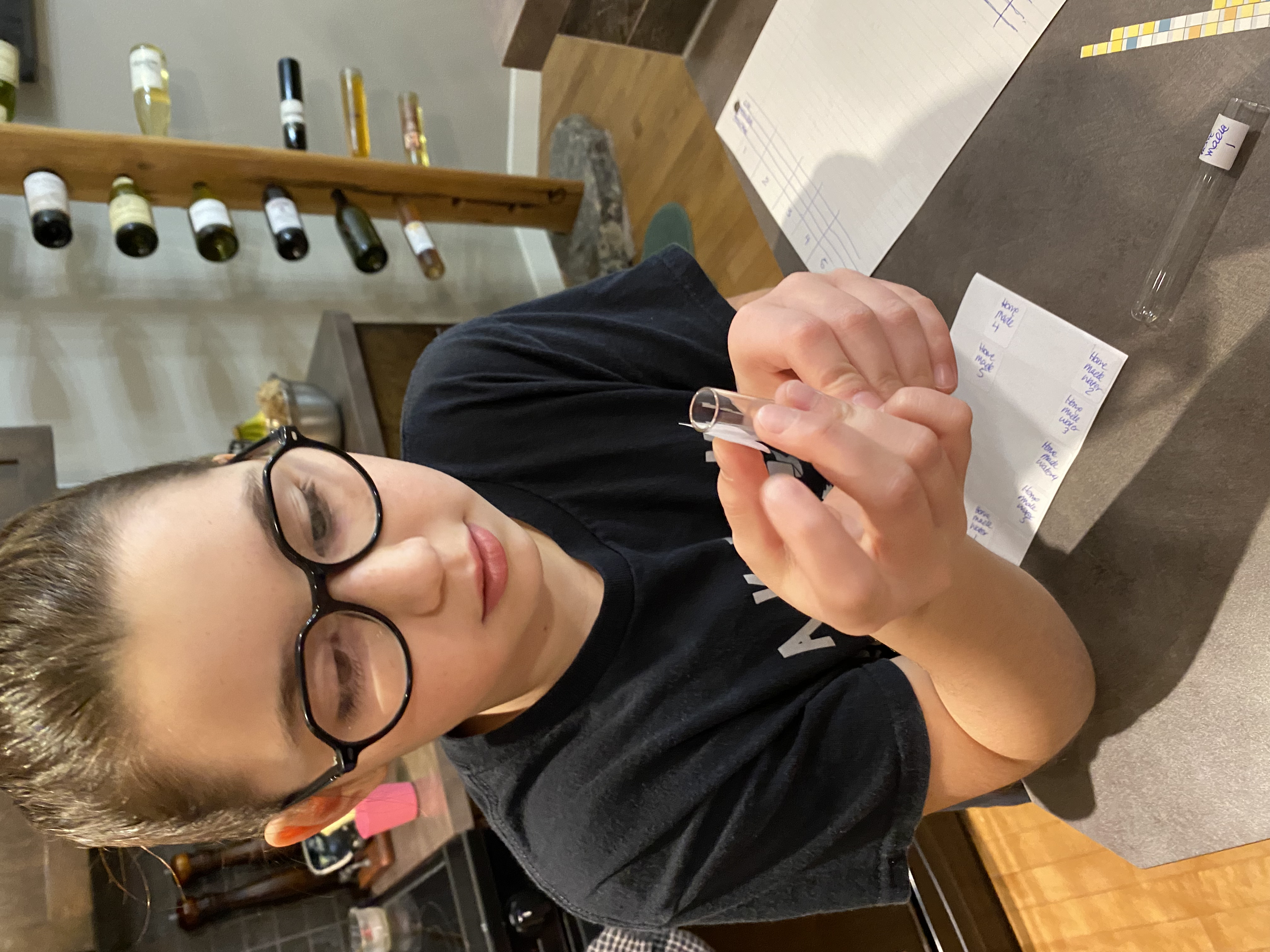
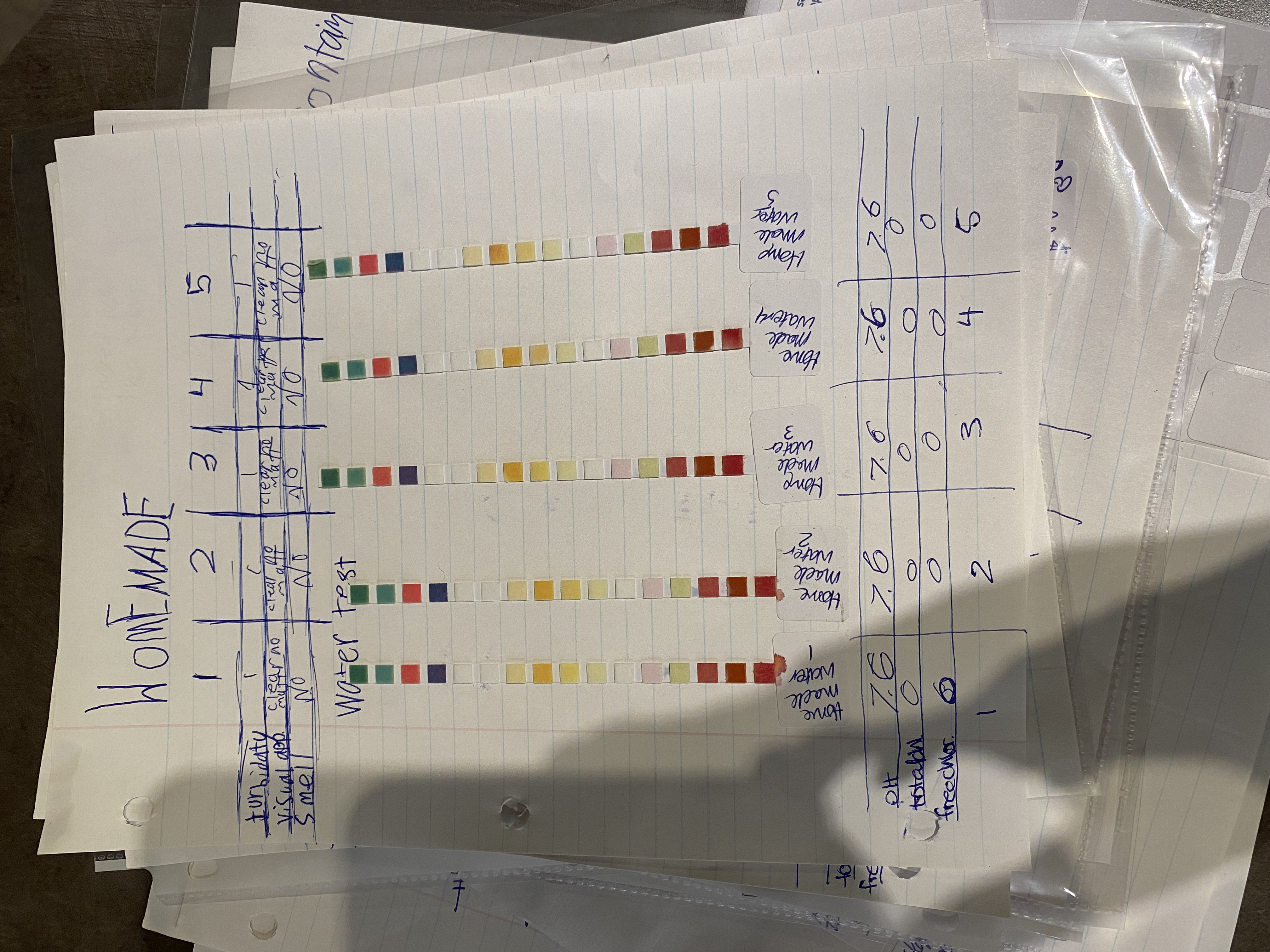
Procedure for Using Brita Filter
- Prepare Brita filter, rinse filter with cold water for 15 seconds before using, install in Brita container
- Stir contaminated water well
- Measure one liter of water from the bucket of contaminated water in a pitcher
- Slowly pour the one liter of water into the top Brita filter
- Do not overfill, may need to add in batches
- When all the water has filtered through and is in the bottom of the Brita filter pour into a one liter cup with measurements
- Put the one liter cup aside and put a label on the cup so what filter it went though is not forgotten
- Test the water (see procedure for testing water)
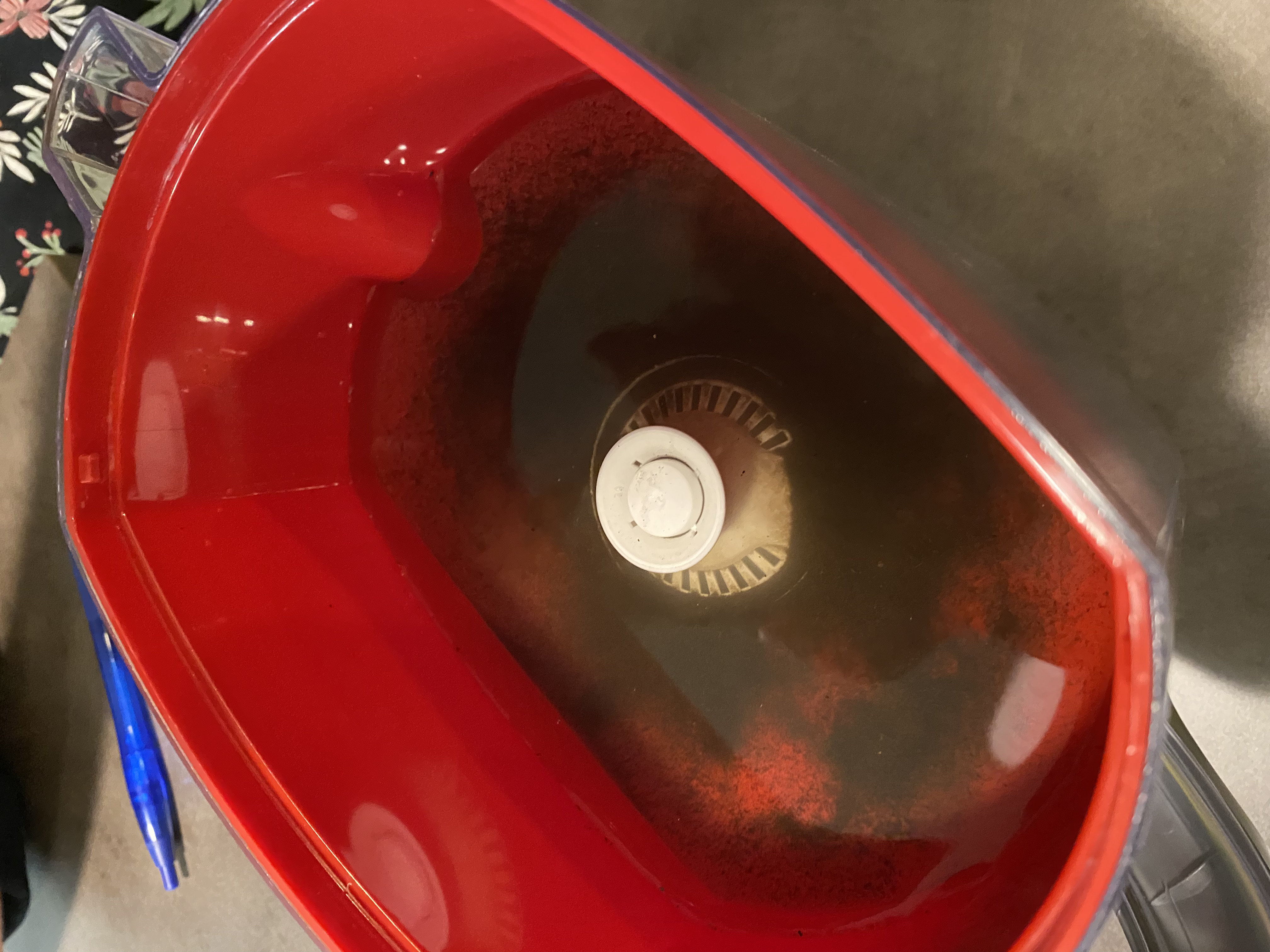

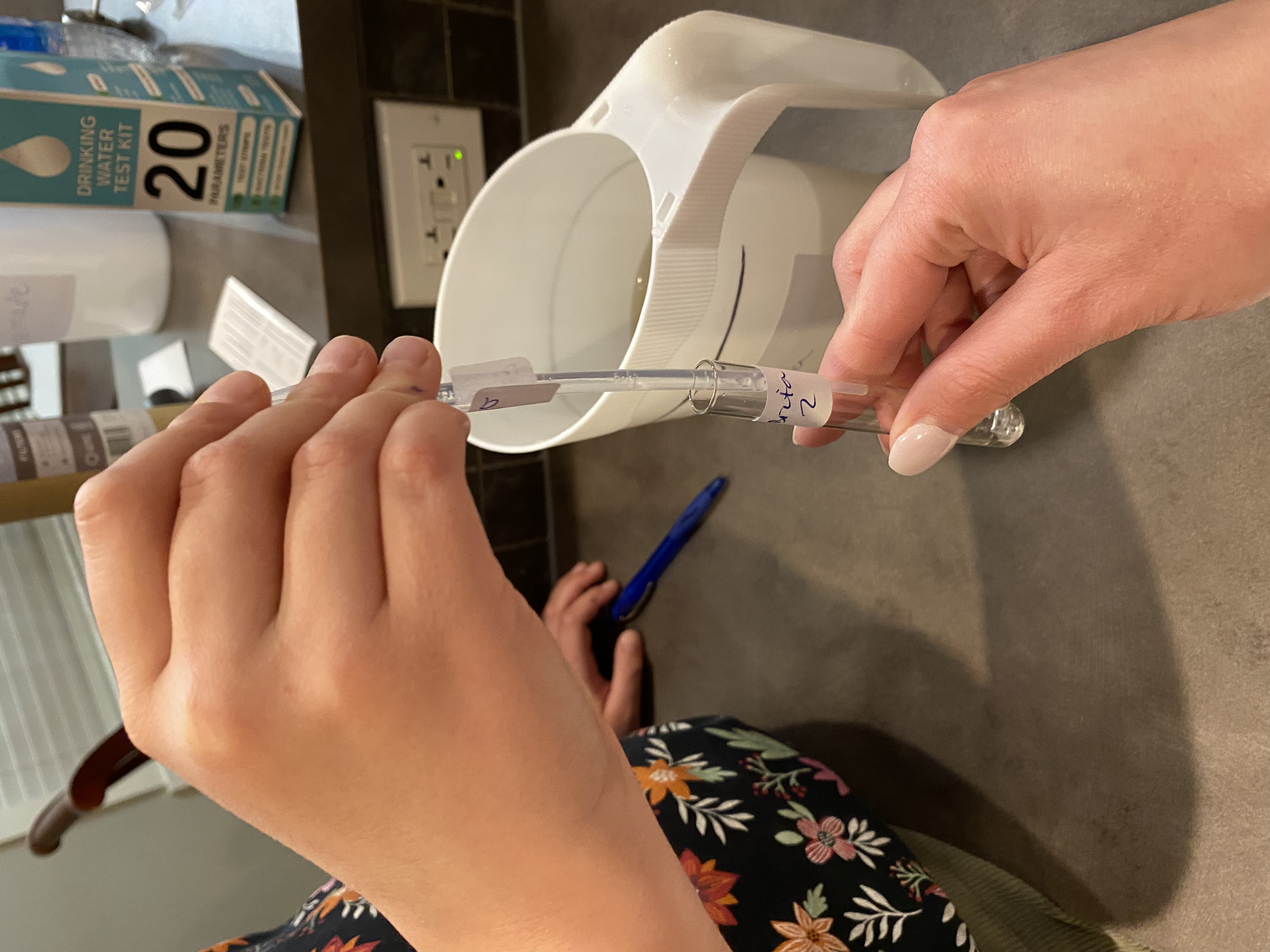
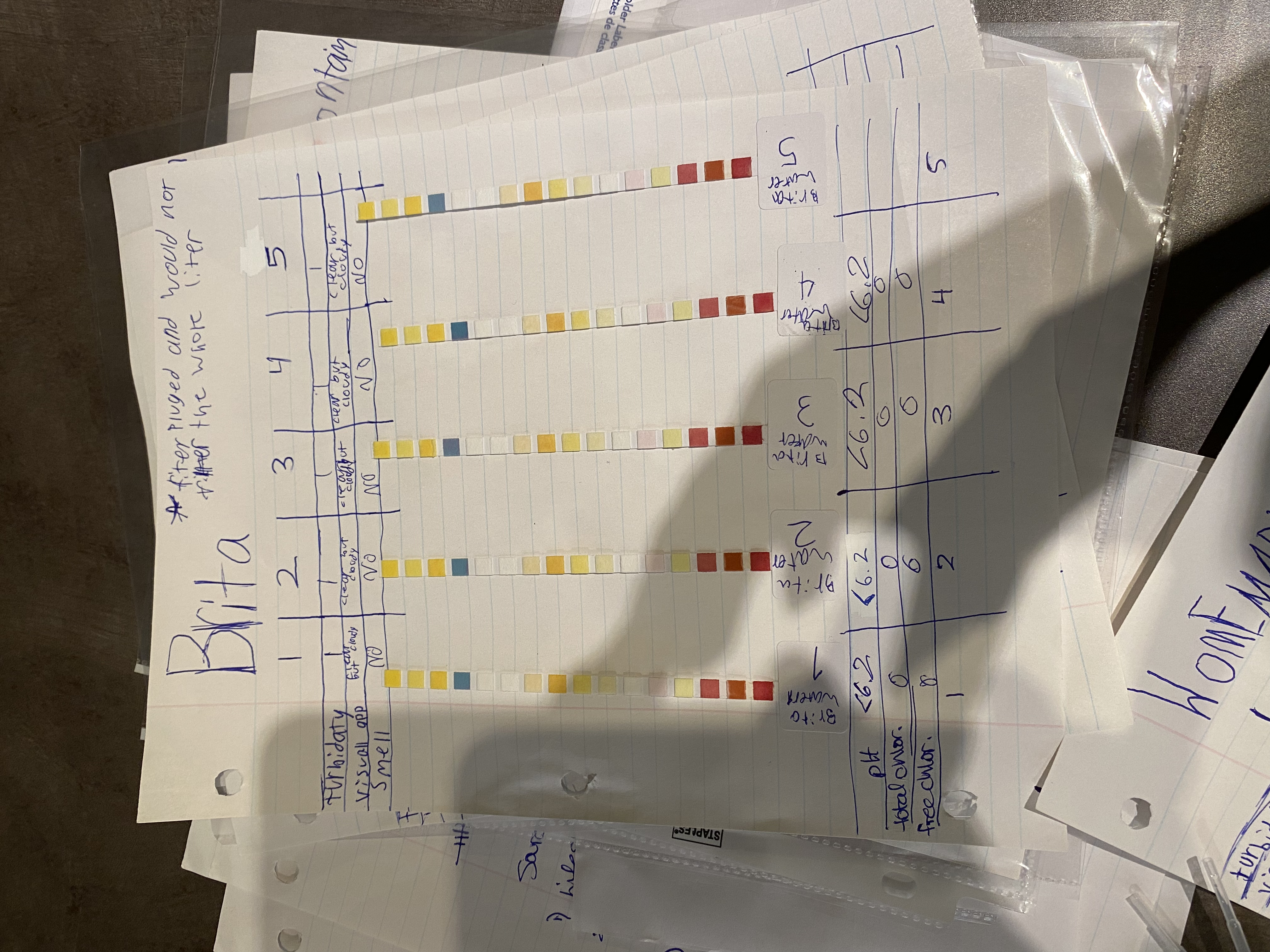
Procedure for Using Lifestraw
- Stir contaminated water well
- Measure one liter of water from the bucket of contaminated water in a pitcher
- Using a filter, pour the one liter of water from the pitcher into the one liter pop/water bottle
- Take the Lifestraw and screw it onto the full one liter pop/water bottle
- Get a one liter cup with measurements
- Put the one liter cup under the Lifestraw with the bottle attached to it
- Squeeze the one liter pop/water bottle so the contaminated water goes through the Lifestraw into the one liter cup with measurements
- Put the one liter cup aside and put a label on the cup so what filter it went though is not forgotten
- Test the water (see procedure for testing water)

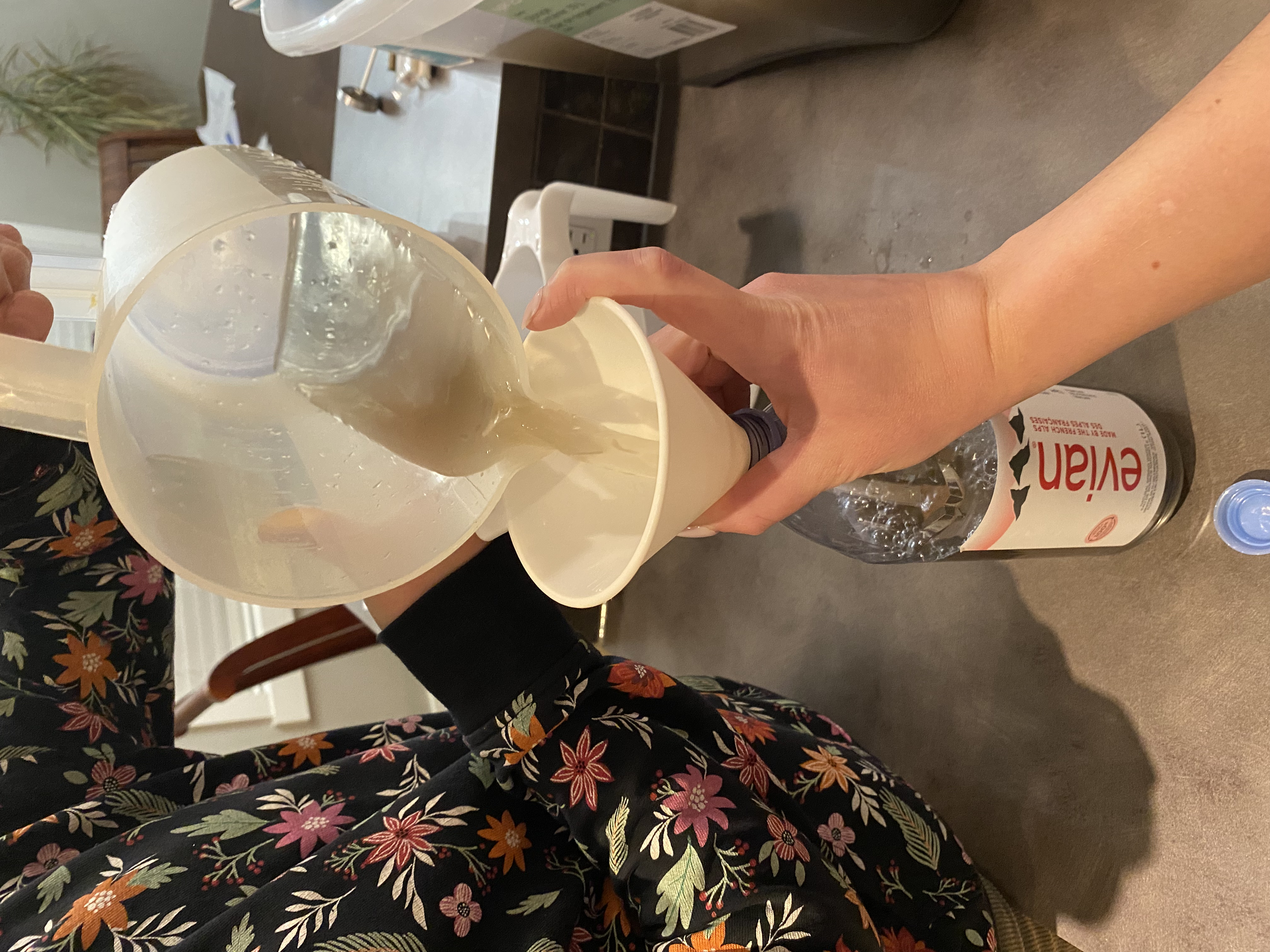
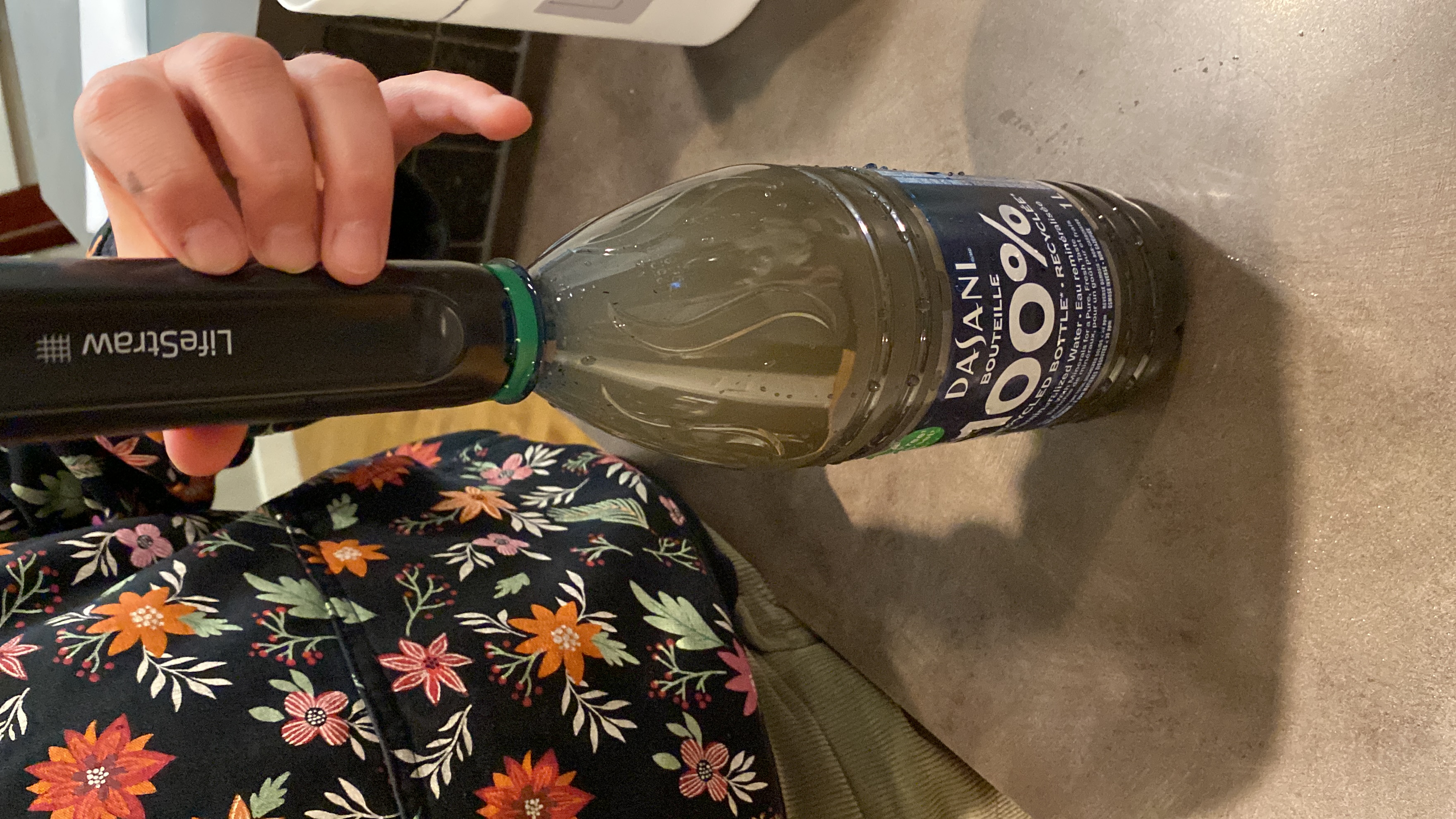

Procedure for Using Alkapam
- Stir contaminated water well
- Measure one liter of water from the bucket of contaminated water in a pitcher
- Pour water into one liter cup with measurements
- Get the alkapam
- Using the measuring spoons, measure ⅛ teaspoon of alkapam and add to contaminated water
- Using a stir-stick, stir alkapam into contaminated water slowly
- Do not mix too fast
- Solids should sink to the bottom of the cup
- Let sit
- Test water (see procedure for testing water)
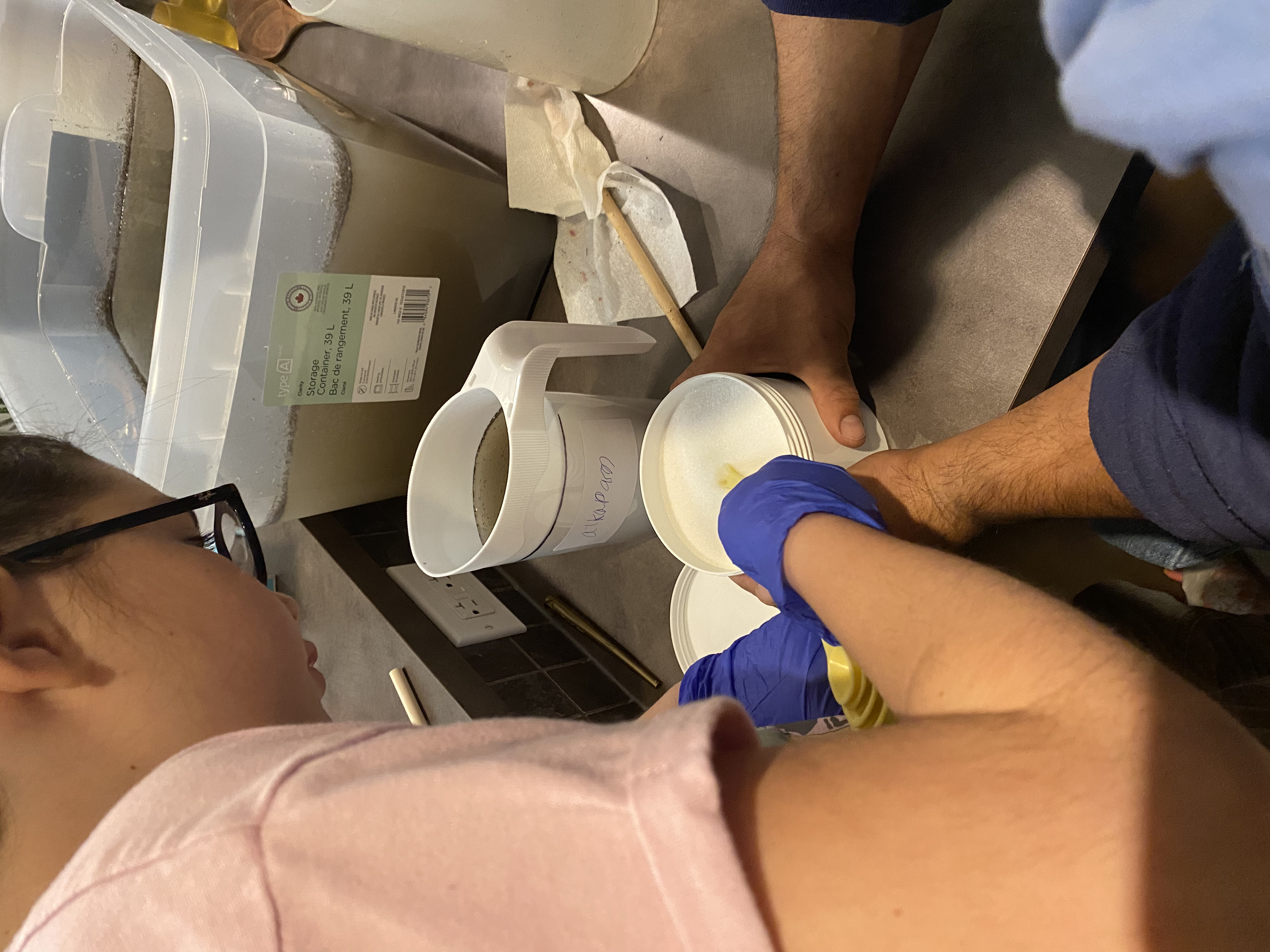


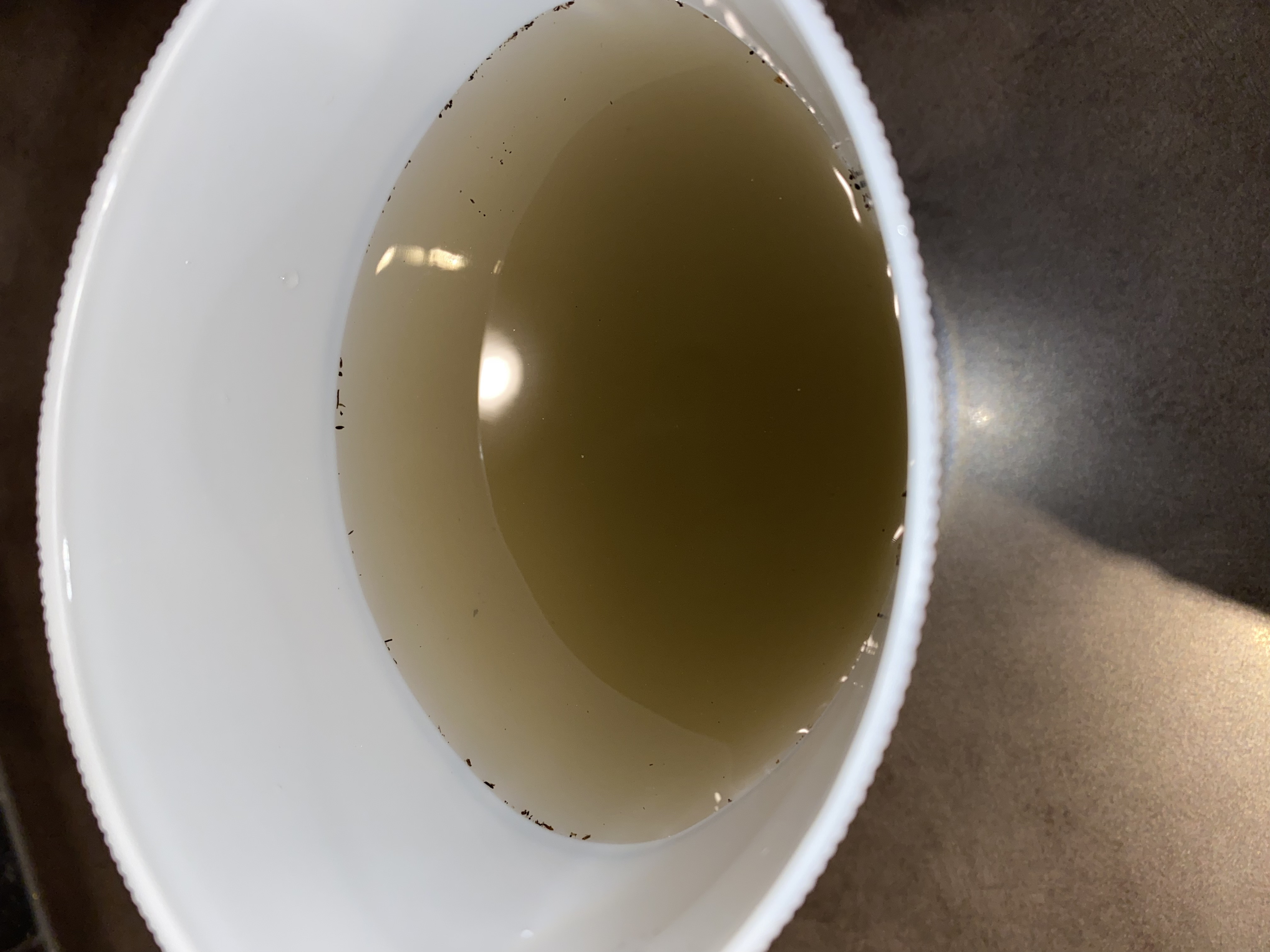
Procedure for Testing Filtered Water - Test Kit
- Gather all filtered water samples in the one liter cups
- Get water test test kit and open
- Take test strip and dip into filtered water sample in one liter cup
- Hold test strip in the water for two seconds
- Gently shake off excess water
- Compare results on test strip against color chart in test kit for pH, free chlorine, and total chlorine
- Repeat five times for each water sample and record results
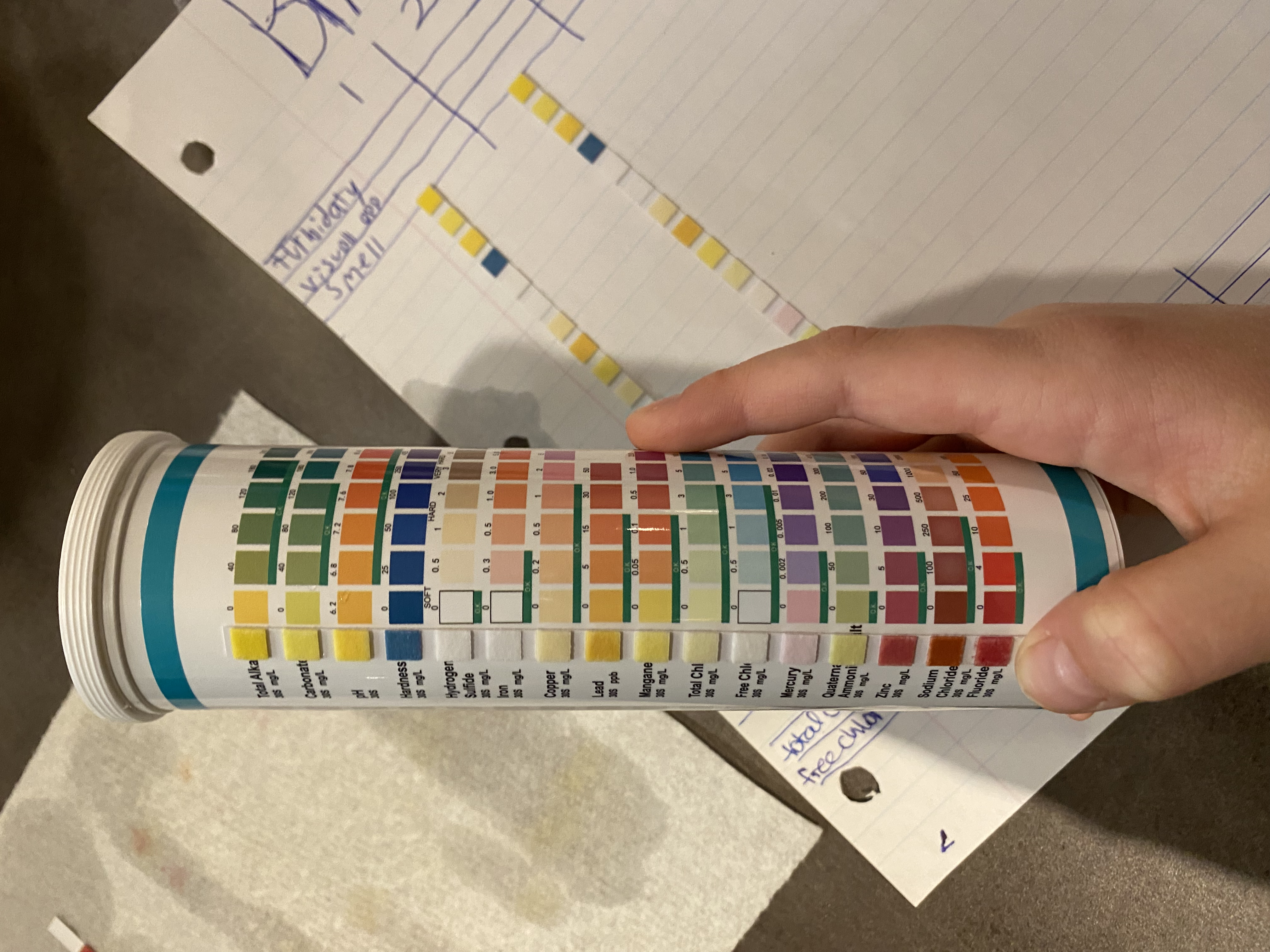
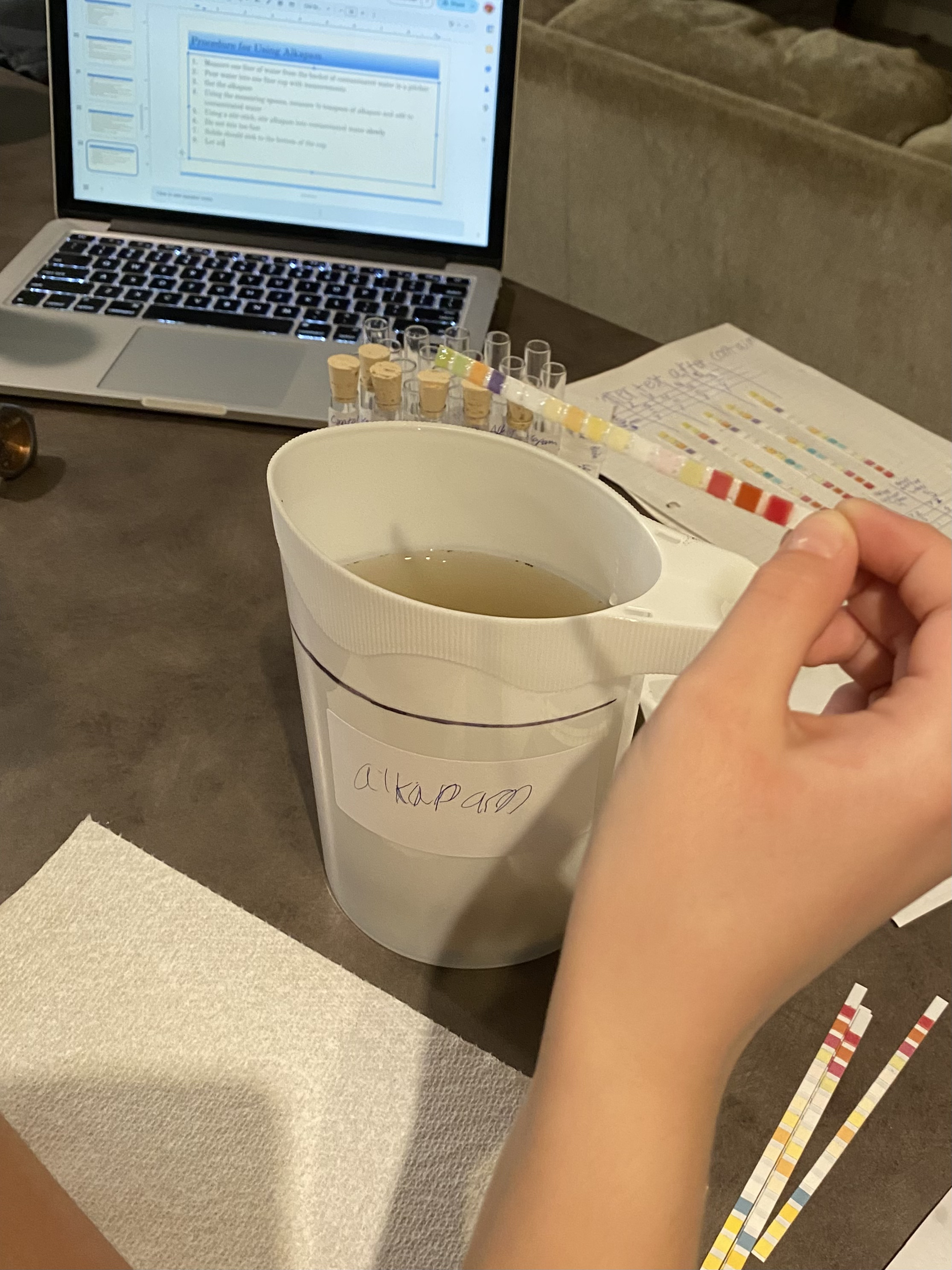
Procedure for Testing Filtered Water - Turbidity/Smell
- Gather all filtered water samples in the one liter cups
- Get the turbidity test kit
- Label the glass sample vials from the kit with the filter type
- Use the pipette to fill of each of the glass sample vials from the turbidity kit with water from the filtered water samples
- Compare each vial to the turbidity chart and record the results
- Look at the visual appearance of the water and record color and if there is suspended matter or not
- Smell each vial for chlorine smell and record if chlorine smell is present or not
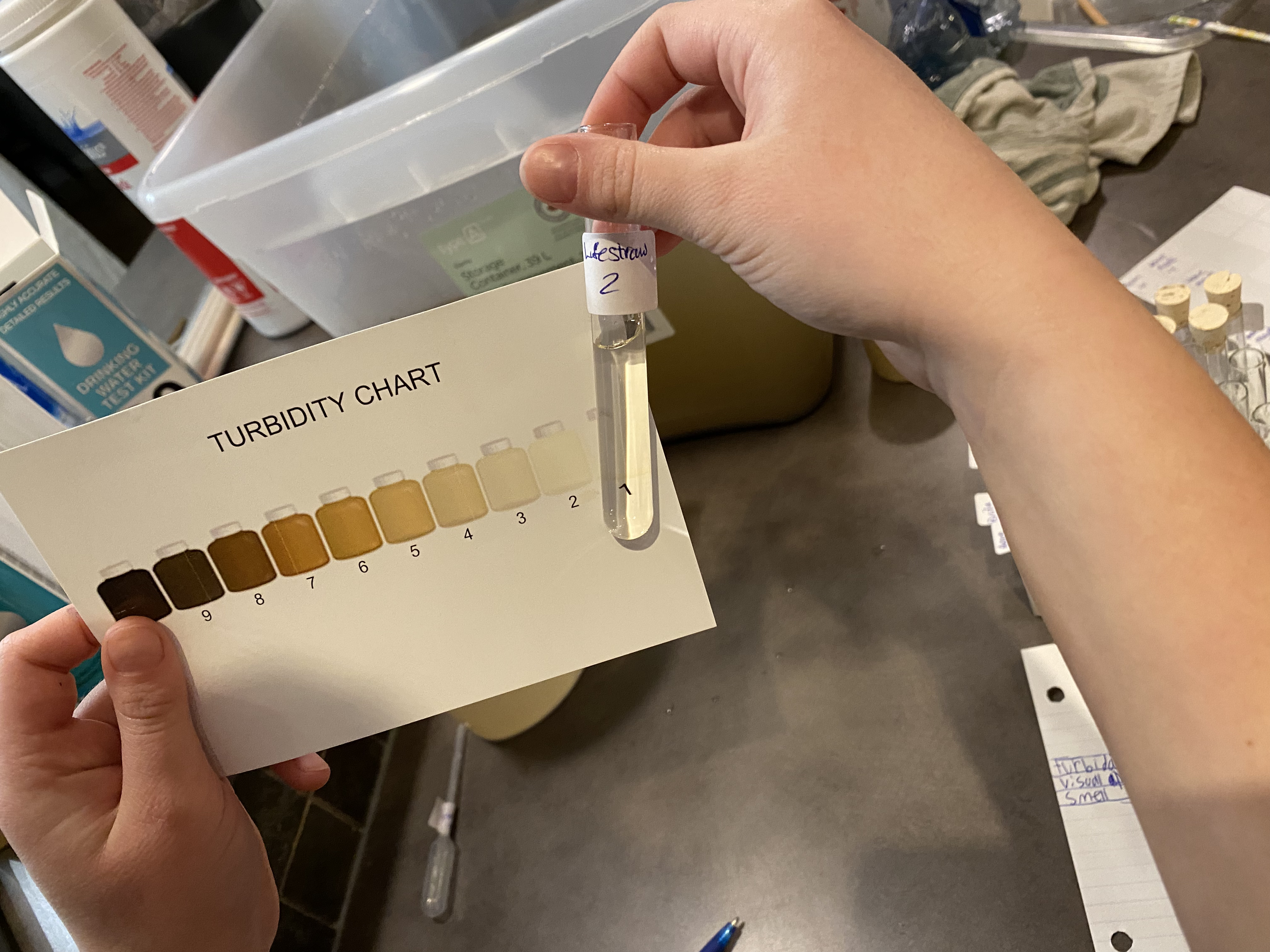
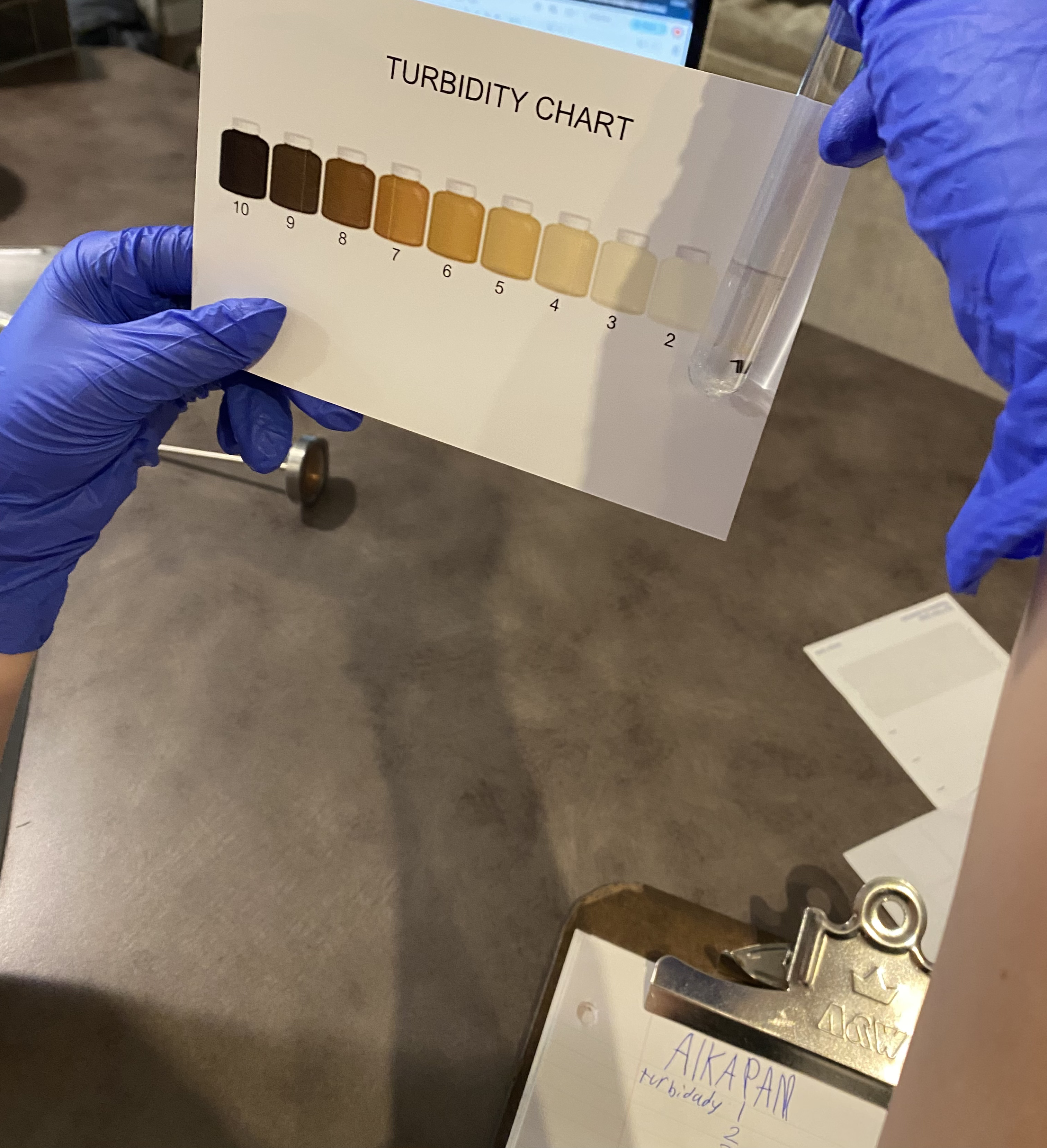
Materials List
- Water (tap)
- Dirt
- Pool chlorine (granulated)
- Water Test Kit (pH, total chlorine, free chlorine)
- Brita Filter
- Life Straw
- Mesh/Fabric (cheese cloth)
- Sand/Gravel
- Sphagnum Moss
- Elastic band
- Activated carbon
- 2 liter pop/water bottle
- 1 liter pop/water bottle
- 1 liter cups (4)
- Plastic measuring spoons & cups
- Stir Sticks
- Alkapam (if we can get it or other flocculant)
- Bucket
- Coffee filters
- Exacto knife
- Thermometer
- Pitcher
- Labels
- Turbidity Test
- Notebook, pens/pencils
- PPE - safety goggles, mask, gloves
- Bowl
- Strainer
- Cutting board
- Paper towel
- Scissors
- Funnel
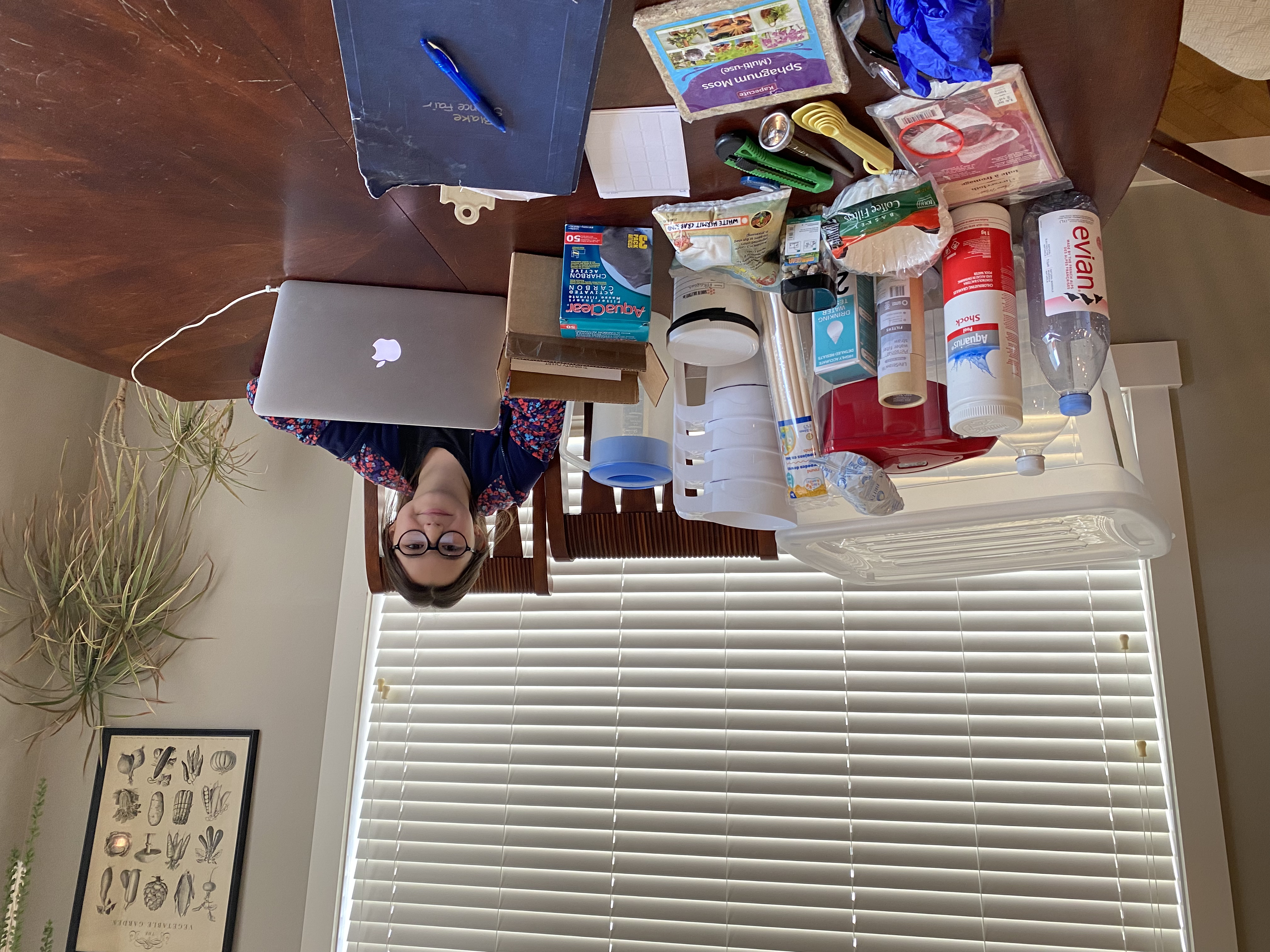
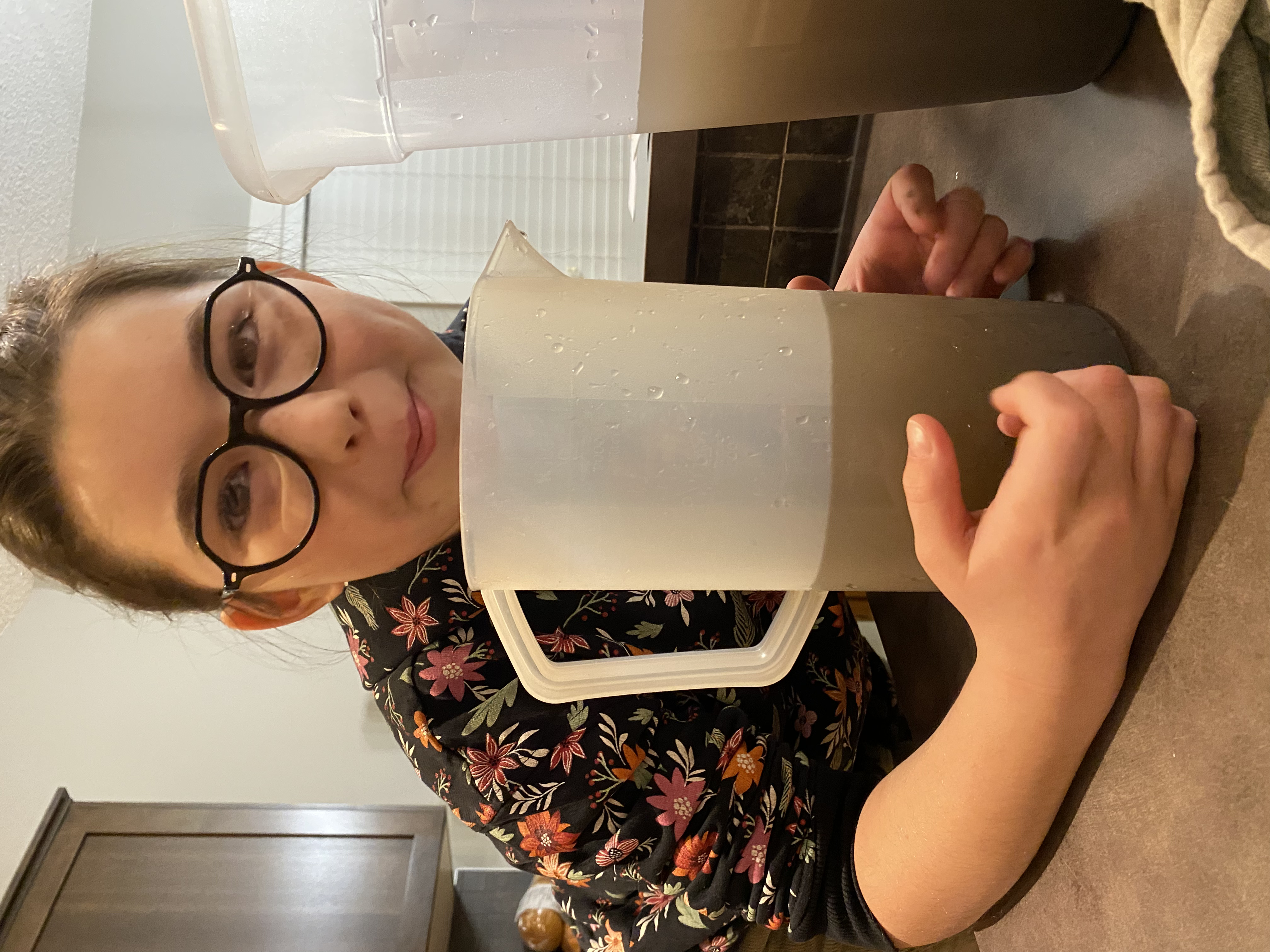
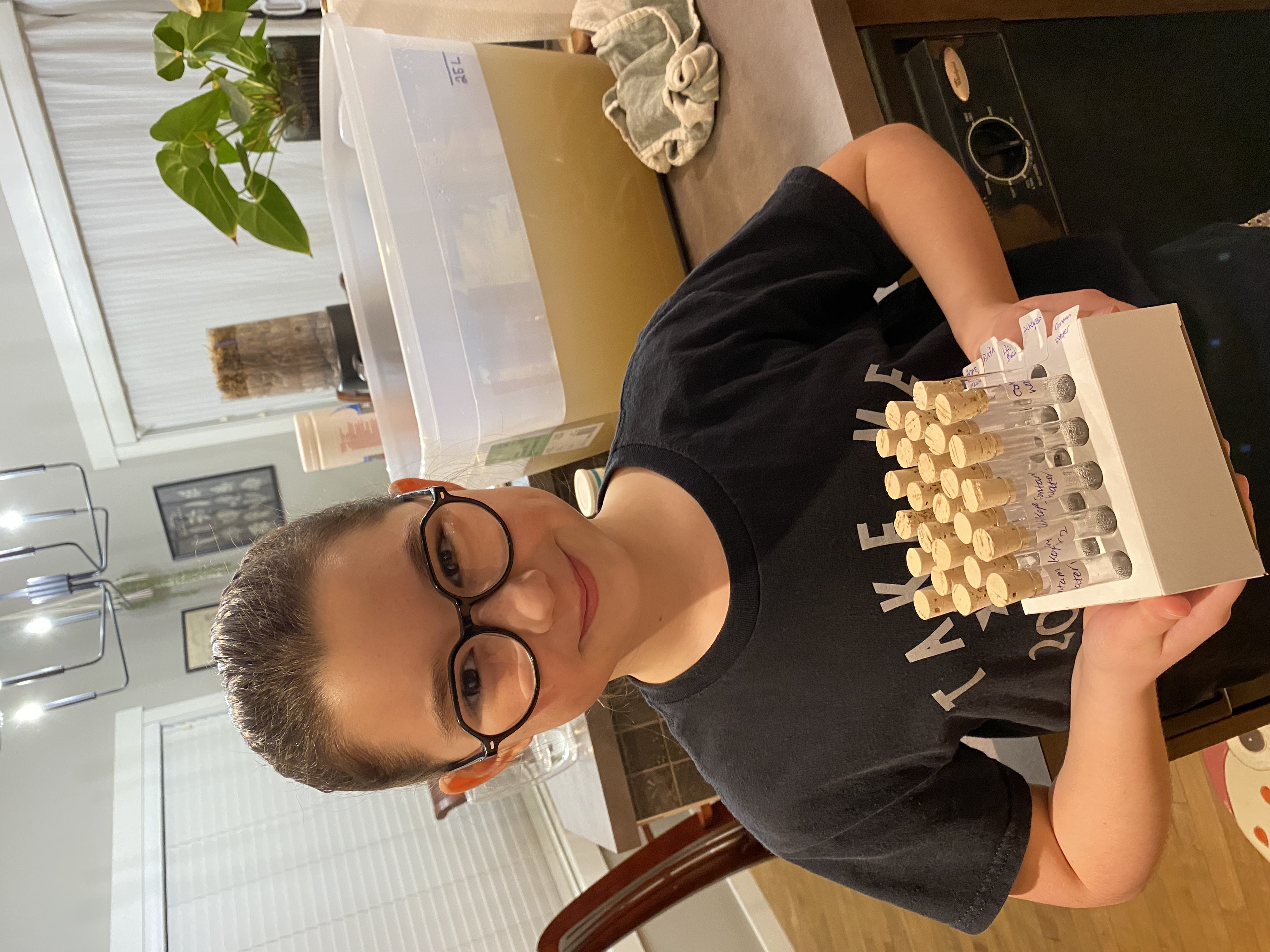
Observations
Photos
Graphs/Data Tables
Qualitative Tests -Visual Appearance (clear, cloudy, matter?)
|
Filter |
Trial 1 |
Trial 2 |
Trial 3 |
Trial 4 |
Trial 5 |
|
Water before contam. |
Clear, no matter |
Clear, no matter |
Clear, no matter |
Clear, no matter |
Clear, no matter |
|
Contaminated Water |
Clear brown, lots of suspended matter |
Clear brown, lots of suspended matter |
Clear brown, lots of suspended matter |
Clear brown, lots of suspended matter |
Clear brown, lots of suspended matter |
|
Brita |
Clear but cloudy |
Clear but cloudy |
Clear but cloudy |
Clear but cloudy |
Clear but cloudy |
|
Homemade |
Clear, no matter |
Clear, no matter |
Clear, no matter |
Clear, no matter |
Clear, no matter |
|
Lifestraw |
Clear, no matter |
Clear, no matter |
Clear, no matter |
Clear, no matter |
Clear, no matter |
|
Alkapam |
Cloudy, yellow, no suspended matter |
Cloudy, yellow, no suspended matter |
Cloudy, yellow, no suspended matter |
Cloudy, yellow, no suspended matter |
Cloudy, yellow, no suspended matter |
Qualitative - Smell (Chlorine present Y/N)
|
Filter |
Trial 1 |
Trial 2 |
Trial 3 |
Trial 4 |
Trial 5 |
|
Water before Contam. |
No |
No |
No |
No |
No |
|
Contam Water |
Yes |
Yes |
Yes |
Yes |
Yes |
|
Brita |
No |
No |
No |
No |
No |
|
Homemade |
No |
No |
No |
No |
No |
|
Lifestraw |
No |
No |
No |
No |
No |
|
Alkapam |
No |
No |
No |
No |
No |
Quantitative Test - Turbidity (1-10)
|
Filter |
Trial 1 |
Trial 2 |
Trial 3 |
Trial 4 |
Trial 5 |
|
Water before contam. |
1 |
1 |
1 |
1 |
1 |
|
Contaminated water |
5 |
5 |
4 |
3 |
3 |
|
Brita |
1 |
1 |
1 |
1 |
1 |
|
Homemade |
1 |
1 |
1 |
1 |
1 |
|
Lifestraw |
1 |
1 |
1 |
1 |
1 |
|
Alkapam |
2 |
2 |
2 |
2 |
2 |
Data - Turbidity (0-5) - I chose to test turbidity to compare what the water looked like before and after filtering
Quantitative Test - pH (6.2 - 8.4)
|
Filter |
Trial 1 |
Trial 2 |
Trial 3 |
Trial 4 |
Trial 5 |
|
Water before contam. |
6.8 |
6.8 |
6.8 |
6.8 |
6.8 |
|
Contaminated water |
7.6 |
7.8 |
7.6 |
7.2 |
7.2 |
|
Brita |
Lower than 6.2, not on chart |
Lower than 6.2, not on chart |
Lower than 6.2, not on chart |
Lower than 6.2, not on chart |
Lower than 6.2, not on chart |
|
Homemade |
7.6 |
7.6 |
7.6 |
7.6 |
7.6 |
|
Lifestraw |
7.2 |
6.8 |
7.2 |
7.2 |
7.2 |
|
Alkapam |
7.2 |
7.2 |
7.2 |
7.2 |
7.2 |
Data - pH (0-8) - I chose to test pH to see how much acidity in the was in the water before and after filtering
Quantitative Test - Free Chlorine (0-20 mg/L)
|
Filter |
Trial 1 |
Trial 2 |
Trial 3 |
Trial 4 |
Trial 5 |
|
Water before contam. |
0 |
0 |
0 |
0 |
0 |
|
Contaminated water |
1 |
1 |
1 |
1 |
1 |
|
Brita |
0 |
0 |
0 |
0 |
0 |
|
Homemade |
0 |
0 |
0 |
0 |
0 |
|
Lifestraw |
0 |
0 |
0 |
0 |
0 |
|
Alkapam |
0 |
0 |
0 |
0 |
0 |
Data - Free Chlorine (mg/L)
Quantitative Test - Total Chlorine (0-20 mg/L)
|
Filter |
Trial 1 |
Trial 2 |
Trial 3 |
Trial 4 |
Trial 5 |
|
Water before contam. |
0 |
0 |
0 |
0 |
0 |
|
Contaminated water |
5 |
5 |
5 |
5 |
5 |
|
Brita |
0 |
0 |
0 |
0 |
0 |
|
Homemade |
0 |
0 |
0 |
0 |
0 |
|
Lifestraw |
0 |
0 |
0 |
0 |
0 |
|
Alkapam |
0 |
0 |
0 |
0 |
0 |
Data - Total Chlorine (mg/L)
Results - (Ideal Water Criteria) Only 1 result means it was the same for each trial.
|
Criteria |
Water before contam. |
Contam. Water |
Brita |
Homemade |
LifeStraw |
Alkapam |
|
Visual Appearance (clear, no matter) |
Clear, no matter |
Clear brown, lots of suspended matter |
Clear but cloudy |
Clear, no matter |
Clear, no matter |
Cloudy, yellow, no susp. matter |
|
Chlorine Smell (no) |
No |
Yes |
No |
No |
No |
No |
|
Turbidity (1) |
1 |
5, 5, 4, 3, 3 |
1 |
1 |
1 |
2 |
|
pH (between 6.5-8.5 or 7-10.5) |
6.8 *depends on which pH critera |
7.6, 7.8, 7.6, 7.2, 7.2 |
Lower than 6.2 |
7.6 |
7.2 |
7.2 |
|
Free chlorine (less than 4mg/L) |
0 |
1 |
0 |
0 |
0 |
0 |
|
Total Chlorine (less than 4mg/L) |
0 |
5 |
0 |
0 |
0 |
0 |
Analysis
Alkapam and Brita did the worst. LifeStraw and the homemade filter did the best. The water before contamination met 5 (or 6, depending on what pH criteria you use) out of the 6 for ideal water. The contaminated water met 2/6 ideal water criteria. The Alkapam did a good job of removing chlorine but didn’t completely get rid of turbidity and left the water cloudy and yellow. The Brita also did a good job of removing chlorine but left the water a bit cloudy and lowered the pH below 6.2. The Alkapam got a 4/6 and the Brita also got a 4/6. The homemade and LifeStraw both got a 6/6! The homemade and LifeStraw both did good at filtering chlorine, making the water clear with no matter, and got rid of turbidity. The homemade filter sample had a pH of 7.6 and the LifeStraw sample had a pH of 7.2, both within the guidelines.
Conclusion
Hypothesis was proven, the homemade filter did do the best at cleaning the chlorine and dirt out of the water. The LifeStraw did better than I expected and tied with the homemade. The Brita did the worst because it left the water cloudy where the LifeStraw and homemade filters did not. The Brita also lowered the pH too much. The explanation for the homemade filter is that carbon and moss are known to be some of the best natural filters. Using them along with other filters (gravel, sand, coffee filters, and cheese cloth) would make it an even stronger, more efficient filter. The LifeStraw did well because of its internal fibers. I would choose the LifeStraw if I had access to it and needed something long lasting and portable. I would choose the homemade filter if I needed something accessible and cost effective.
Application
My project is important because there are places on our planet that do not have clean drinking water. There are still 35 long term drinking water advisories on First Nations Communities in Canada, this means that they have not had access to clean drinking water for over a year.
Other parts of the world (Papua New Guinea, Democratic Republic of the Congo, Chad, and Ethiopia to name a few)do not have access to clean drinking water. Their water is contaminated with feces and possibly other things. Water like that can make people sick with E-coli, encephalitis, gastroenteritis, Hepatitis A and other diseases.
Ruth Patrick was a freshwater ecologist that studied pollution and died at 105 and was also involved in the scientific discussions that led to the Clean Water Act of 1972 . The Clean Water Act of 1972 created the structure for regulating pollutants in waters and quality standards for drinking water in The United States. Canada has an act called the Canada Water Act that was started in 1970. It focuses more on the conservation of Canada’s water and has no pollution control. The American Act has strict penalties for pollution control and focuses more on water quality standards.
Dirty drinking water can be a very terrible thing and I think that we as humans should work to help water pollution and ensure access to clean drinking water.
Based off my experiment, I would recommend the LifeStraw or a homemade filter to communities and countries that don’t have clean drinking water.
LifeStraw has a product called “LifeStraw Community” that is designed for emergencies, disaters or humanitarian work. It is a larger scale of the LifeStraw I used and lasts 100,000 L before needing to replace the filter. It costs $580. The LifeStraw that I used cost $37.00 and can filter 4000 L. Papua New Guinea is a very disaster prone country and often has cyclones and flooding. 55% of people in Papua New Guinea do not have clean water. The LifeStraw Community could be set up in disaster centers to provide people that are evacuated with clean water.
Ethiopia has a population of 120 million, but 64 million of those people do not have access to clean drinking water. There is a lack of basic sanitation and long periods of drought or floods. If they could collect rainwater or reuse household water, a homemade filter could be used to filter it. A homemade filter can be easily made and costs about $24.01 per filter. It would take further testing to figure out how many liters of water it can filter before needing to be replaced. I think larger scale homemade filters would also be good for the First Nations communities in Canada that don’t have clean drinking water.
Both filters have pros and cons and would depend on the circumstances such as cost, ability to get materials, and the ability to get LifeStraw shipped. Both of these filters are also a great start to help the whole planet have access to clean drinking water.
Sources Of Error
- Water may have gone through different filters at different speeds. This means that the water samples spent different time in different filters and some of them could have been filter more effectively if it took longer.
- Brita got too plugged with dirt and did not filter all the water. I got enough water to sample after waiting for some to filter through but did not get a the full liter like the rest of the filters. I think to do this filter you would need to filter the large contaminates out first with something like a pool strainer or cheese cloth.
- Test strips changed color after drying - this is a problem because if I didn’t read the test strips right away, I could have gotten different results.
- The test strips didn’t go below 6.2. The Brita water sample was less than 6.2 but I couldn’t determine the exact number because the chart didn’t go below 6.2.
- Lifestraw did not fit on original bottle - we had to go out and get a different bottle to be used for my project but this LifeStraw can be used without a bottle
Citations
Alpha Measurement Solutions. (2024, December 17). Chlorine ppm in drinking water. Alpha Measure. https://alpha-measure.com/chlorine-ppm-levels-in-drinking-water/#:~:text=Inhaling%20chlorine%20fumes%20or%20consuming%20water%20with,individuals%20with%20asthma%20or%20other%20respiratory%20conditions.
Apec Water. (2024, May 20). Your guide to ion exchange water filters. https://www.freedrinkingwater.com/blogs/water-health/quality-water-filtration-method-ion-exchange#:~:text=Ion%20exchange%20resin%20is%20a,water%2C%20depending%20on%20their%20charge.
Apera Instruments. (2017, November 29). Why choose a ph meter instead of a ph test strip. APERA INSTRUMENTS. https://aperainst.com/blog/why-choose-a-ph-meter-instead-of-a-ph-test-strip/#:~:text=As%20with%20precision%2C%20test%20strips,and%20accurate%20than%20test%20strips.&text=When%20a%20test%20strip%20is,compared%20with%20a%20color%20chart.
Barlow, T. (2023, April 26). How many microns is a coffee filter: Detailed guide & insights. Majesty Coffee. https://majestycoffee.com/blogs/posts/how-many-microns-is-a-coffee-filter#:~:text=Paper%20filters%20typically%20have%20pore,and%20caffeine%20to%20pass%20through.
BJC Healthcare, D. of L. (2012, April 1). Ph testing using ph strip. slchlabtestguide.bjc.org. https://slchlabtestguide.bjc.org/UploadFile/UploadDocument/POC FOLDER/pH Testing Using ph Strip.pdf
Boyle, R. W., Curiale, J. A., Disnar, J. R., Helgeson, H. C., Lewan, M. D., Mossman, D. J., Nagy, B., Parnell, J., Arthur, M. A., Bennett, P. C., Beveridge, T. J., Ronde, C. E. J. D., Dyer, B. D., & Farrell, K. P. J. (1999, August 27). Carbonaceous substances in mineral deposits: Implications for Geochemical Exploration. Journal of Geochemical Exploration. https://www.sciencedirect.com/science/article/abs/pii/S0375674299000151#:~:text=Carbonaceous%20substances%20(CS)%20are%20intimately,crude%20oil%20to%20solid%20bitumen.
Brita. (2021, June 6). Filtration explained. Brita Canada. https://www.brita.ca/why-brita/health/how-do-brita-filters-work
Brita. (n.d.). Brita - Better Water. Brita.com. https://www.brita.com/why-brita/better-water/
Brundage, R. (2021, September 7). How temperature affects ph measurements. pHionics. https://www.phionics.com/2021/09/07/how-temperature-affects-ph-measurements/#:~:text=Pure%20water%20under%20standard%20conditions,or%20H3O+).
BYJUS. (2023, June 14). Reverse osmosis (RO) - definition, working principle, process, experiment, advantages, disadvantages of reverse osmosis. https://byjus.com/chemistry/reverse-osmosis/#:~:text=Reverse%20osmosis%20is%20a%20means,water%20is%20filtered%20under%20pressure.
Canada Health. (2025, March 4). Drinking Water Quality. Canada.ca. https://www.canada.ca/en/health-canada/services/environmental-workplace-health/reports-publications/water-quality/guidelines-canadian-drinking-water-quality-summary-table.html
Centers for Disease Control and Prevention. (2024, July 31). What causes tap water contamination. https://www.cdc.gov/drinking-water/causes/index.html
ChemREADY. (2024, April 24). Flocculation in water treatment. https://www.getchemready.com/water-facts/what-is-flocculation/
City of Calgary. (2024a, June 6). City issues boil water advisory for Bowness and Stage 4 outdoor watering ban for all residents and businesses. newsroom.calgary.ca. https://newsroom.calgary.ca/city-issues-boil-water-advisory-for-bowness-and-stage-4-outdoor-watering-ban-for-all-residents-and-businesses/
City of Calgary. (2024b, June 11). Update June 11: Critical water main break affecting city-wide water usage. Update June 7: Critical water main break affecting city wide water usage. https://newsroom.calgary.ca/update-3-critical-water-main-break-affecting-city-wide-water-usage/
City of Calgary. (n.d.). Bearspaw South Feeder Main - FAQ. https://www.calgary.ca. https://www.calgary.ca/emergencies/feeder-main-repair/faq.html
Columbia Shuswap Regional District. (n.d.). Water Turbidity. Water Turbidity | CSRD, BC. https://www.csrd.bc.ca/329/Water-Turbidity#:~:text=Contaminants%20such%20as%20viruses%2C%20bacteria,suspended%20particles%20in%20turbid%20water.
The Conference Board of Canada. (2023, June 27). Water quality index. https://www.conferenceboard.ca/hcp/water-quality-index-aspx/#:~:text=Canada’s%20water%20quality%20is%20most,heightened%20risks%20to%20human%20health.
David Suzuki Foundation. (2022, October 5). What’s the Best Water Filtration System? https://davidsuzuki.org/living-green/whats-best-water-filtration-system/
Denchak, M. (2023, January 11). Water pollution: Everything you need to know. Water Pollution Definition - Types, Causes, Effects. https://www.nrdc.org/stories/water-pollution-everything-you-need-know#categories
Doctors, A. the. (2018, August 31). Ask the doctors - is water with a high ph safe to drink?. UCLA Health. https://www.uclahealth.org/news/article/ask-the-doctors-is-water-with-a-high-ph-safe-to-drink#:~:text=The%20danger%20of%20more%20acidic,obviously%20poses%20a%20health%20risk.
Encyclopædia Britannica, inc. (n.d.-a). Salinity. Encyclopædia Britannica. https://www.britannica.com/science/salinity
Encyclopædia Britannica, inc. (n.d.-b). Salinity. Encyclopædia Britannica. https://www.britannica.com/science/salinity
Environment and Climate Change Canada, & Government of Canada, En1-20E Canada Water Act (2020). Gatineau, QC; Her Majesty the Queen in Right of Canada, Represented by the Minister of Environment.
Environmental Engineering. (2023, September 29). What is the most accurate way to measure ph in drinking water?. How to Measure pH in Drinking Water Accurately. https://www.linkedin.com/advice/0/what-most-accurate-way-measure-ph-drinking
Environmental Protection Agency. (2024a, June 12). Quality Water Standards for Surface Water. EPA. https://www.epa.gov/laws-regulations/summary-clean-water-act#:~:text=(1972),quality%20standards%20for%20surface%20waters.
Environmental Protection Agency. (2024b, August 17). Types of Drinking Water Contaminants. EPA. https://www.epa.gov/ccl/types-drinking-water-contaminants#:~:text=The%20Safe%20Drinking%20Water%20Act,contaminants%20are%20organisms%20in%20water.
Environmental Working Group. (2025, February 1). Sources of Water Pollution. https://www.ewg.org/tapwater/sourcesofwaterpollution.php
Excell, L. (2023, March 21). How flocculation helps filtration. Dober. https://www.dober.com/haloklear/resources/intern-view-how-flocculation-helps-filtration
Fondriest Environmental, Inc. (2013, November 19). Ph of Water. Fundamentals of Environmental Measurement. https://www.fondriest.com/environmental-measurements/parameters/water-quality/ph/#:~:text=When%20carbonate%20minerals%20are%20present,make%20neutral%20water%20slightly%20basic.
General Carbon Corporation. (2023, July 13). Activated carbon & charcoal . https://generalcarbon.com/facts-about-activated-carbon/activated-carbon-faq/#:~:text=Activated%20carbon%20is%20a%20highly,attract%20and%20hold%20organic%20chemicals.
Giovanisci, M. (2024, November 21). How to raise free chlorine levels in a pool. Swim University. https://www.swimuniversity.com/raise-free-chlorine/
Government of Alberta. (2011, February 1). Current MSDS for Materials and Additives Used in Drilling. Alberta.ca. https://open.alberta.ca/dataset/15602bf8-3d22-4060-a229-84b38d179a8c/resource/d32df60a-b1d1-4f1d-a32c-4eb71b848076/download/app-g-current-msds-for-materials-additives-used-in-drilling.pdf
Government of Alberta. (2024, June 7). This is an Alberta emergency alert. The City of Calgary has updated the Water Supply Alert. Alberta.ca. https://www.alberta.ca/aea/cap/2024/06/07/2024-06-07T11_33_20-06_00%3DCityofCalgary%3D43A58FE2-5599-48B8-AB33-9D9CFF837C42.htm
Government of Canada; Indigenous Services Canada. (2025, March 11). Ending long-term drinking water advisories. https://www.sac-isc.gc.ca/eng/1506514143353/1533317130660
Government of Ontario. (2022, June 10). Using ultraviolet (UV) disinfection on drinking water systems. ontario.ca. https://www.ontario.ca/page/using-ultraviolet-uv-disinfection-drinking-water-systems#:~:text=UV%20disinfection%20is%20a%20process,light%20inactivates%20these%20human%20pathogens.
Grennier, M. (2019, July 22). Water treatment solution lets mother nature do the work. Chiller & Cooling Best Practices. https://coolingbestpractices.com/system-assessments/water-savings/water-treatment-solution-lets-mother-nature-do-work
HealthLink BC. (2022, June 14). Drinking water chlorination facts. Drinking water chlorination facts | HealthLink BC. https://www.healthlinkbc.ca/healthlinkbc-files/drinking-water-chlorination-facts
Horiba. (2016, October 28). Measuring salinity of water. HORIBA. https://www.horiba.com/usa/water-quality/applications/water-wastewater/measuring-salinity-of-water/
IDE Technologies. (2023, November 1). What is desalination? technologies methods and Processes. IDE Tech. https://ide-tech.com/en/water-solutions/sea-water-desalination/#:~:text=There%20are%20two%20main%20types,water%20produced%2C%20and%20energy%20requirements.
Joel, G. (2024, February 22). Don Juan Pond, Antarctica: Saltiest body of water on Earth. Antarctica Cruises. https://www.antarcticacruises.com/guide/don-juan-pond-antarctica-saltiest-body-of-water-on-earth
King, J., & Higgs, B. (2024, April 10). Free chlorine vs total chlorine: When to measure what?. Free Chlorine vs Total Chlorine | When to Measure What? https://www.ysi.com/ysi-blog/water-blogged-blog/2024/04/free-chlorine-vs-total-chlorine-when-to-measure-what#:~:text=Free%20chlorine%20refers%20to%20the,neutralize%20contaminants%20in%20the%20water.
Legion, E. (2024, June 24). Bacteria in water: Discover the most common pathogens. Aqua free. https://www.aqua-free.com/en/magazine/bacteria-and-other-microbes-in-drinking-water#:~:text=These%20include%20salmonella%2C%20enterobacter%20and,E%20by%20drinking%20tap%20water.
LifeStraw. (n.d.). LifeStraw technology. LifeStraw Water Filters & Purifiers. https://lifestraw.com/pages/our-technology
McFarland, J. (2025, January 7). Schulich Professor says municipalities around the world are learning lessons from Calgary’s 2024 water feeder main break. ucalgary.ca. https://ucalgary.ca/news/schulich-professor-says-municipalities-around-world-are-learning-lessons-calgarys-2024-water-feeder
Media, H. W. (2024, July 4). Water treatment in developing countries : Healing waters. Healing Waters International. https://healingwaters.org/water-treatment-in-developping-countries/
Melgar, A. (2024, July 1). Calgary’s Bearspaw Water Treatment Plant reconnected to water network. CityNews Calgary. https://calgary.citynews.ca/2024/07/01/calgary-water-use-lowest-stabilization/
Minnesota Department of Health. (2024, October 17). Drinking water chlorination: Frequently asked questions. Drinking Water Chlorination: Frequently Asked Questions - MN Dept. of Health. https://www.health.state.mn.us/communities/environment/water/factsheet/chlorination.html#:~:text=It%20is%20the%20most%20common,plant%20to%20the%20consumer’s%20tap.
New Jersey Sea Grant Consortium. (2010, November 11). Clarity and Turbidity - New Jersey Sea Grant Consortium. NJ Sea Grant. http://www.njseagrant.org/wp-content/uploads/2014/03/clarity_and_turbidity.pdf
Ochoco Bushcraft. (2024, February 7). One Of The Best Water Filters I’ve Ever Tested! The LifeStraw Peak. YouTube. https://www.youtube.com/watch?v=iVel5NWHQdc
Olszak, N. (2024, October 29). How to treat turbidity in water: CWS. Complete Water Solutions. https://complete-water.com/resources/how-to-treat-turbidity-in-water
Omernik, J., Johnson, C., Irish, J., & Griffith, G. (2018, August 7). Alkalinity and Water. USGS. https://www.usgs.gov/special-topics/water-science-school/science/alkalinity-and-water#:~:text=Definition%20of%20alkalinity%3A%20%22The%20buffering,a%20fairly%20stable%20pH%20level%22
Orenda Technologies, O. (2024, July 15). Total alkalinity vs. ph, and their roles in Water Chemistry. Blog. https://blog.orendatech.com/total-alkalinity-role-water-chemistry
ProLab Inc. (2023, August 10). Total water quality - PRO-LAB®. PROLAB INC. https://www.prolabinc.com/total-water-quality-test-kit/#:~:text=WHAT%20IS%20TOTAL%20WATER%20QUALITY,are%20in%20your%20drinking%20water.
Public Health Ontario. (2020, November 26). Chlorine Dilution Calculator. https://www.publichealthontario.ca/en/health-topics/environmental-occupational-health/water-quality/chlorine-dilution-calculator
Pure Water Products LLC. (n.d.). Types of chlorine used in water treatment. Types of Chlorine Used in Water Treatment – Pure Water Products, LLC. https://www.purewaterproducts.com/articles/types-of-chlorine-used-in-water-treatment#:~:text=The%20three%20most%20common%20chlorine,on%20the%20pH%20conditions%20required.
Razgaitis, R. (2024, July 8). What is the best ph level of water for drinking?. Flowater. https://drinkflowater.com/what-is-the-best-ph-level-of-water-for-drinking/
Reich, D. (2021, February 16). What is Ion Exchange?. Fluence Corporation. https://www.fluencecorp.com/what-is-ion-exchange/
Reid, K. (2025, March 10). 10 worst countries for access to Clean Water. World Vision. https://www.worldvision.org/clean-water-news-stories/10-worst-countries-access-clean-water
Reijnen, J. (2021, February 12). Cloth filter: Filter technology. Royal Brinkman International - Global Specialist in Horticulture. https://royalbrinkman.com/knowledge-center/technical-projects/water-filter-technologies-horticulture/cloth-filter
Rossi, P. (2024, June 6). Free chlorine vs. total chlorine: What’s best for your pool?: Byrossi. Royal Parcevian. https://rossihottubs.com/free-chlorine-vs-total-chlorine/#gref
Sensorex. (2020, February 11). Free chlorine vs total chlorine: What’s the difference? Sensorex Liquid Analysis Technology. https://sensorex.com/free-chlorine-vs-total-chlorine/?srsltid=AfmBOoplQY3dgPmWHKCvcpu2HPxouuIiLu3MjhG_yp1hMXQsiDChEPiz
Stricklin, T. (2023, April 18). Explained: Why micron rating matters in water filtration. SpringWell Water Filtration Systems. https://www.springwellwater.com/micron-rating-explained/#:~:text=The%20micron%20rating%20indicates%20the,of%20these%20contaminants%20slip%20through.
Taylor, M. (2021, November 30). Removeing radioacitve contaminants from water. Save The Water. https://savethewater.org/removing-radioactive-contaminants-from-water/#:~:text=Reverse%20osmosis%20is%20one%20of,the%20treatment%20of%20radioactive%20water.
UrbanYYC, J. (2024, June). R/Calgary on reddit: Anyone else experiencing cloudy water?. reddit.com. https://www.reddit.com/r/Calgary/comments/1dsk23z/anyone_else_experiencing_cloudy_water/
USGS Water Science School. (2018, June 11). Saline water and salinity. United States Geological Survey. https://www.usgs.gov/special-topics/water-science-school/science/saline-water-and-salinity
Water Quality Association. (2022a, September 28). Acidity. https://wqa.org/learn-about-water/perceptible-issues/acidity/#:~:text=Acidity%20is%20the%20quantitative%20capacity,7%20are%20basic%20or%20alkaline.
Water Quality Association. (2022b, December 16). Common Contaminants. https://wqa.org/learn-about-water/common-contaminants/
Wikimedia Foundation. (2025, February 9). Alkali. Wikipedia. https://en.wikipedia.org/wiki/Alkali
Wisewell Team. (2022, June 3). Natural water filters: How do they work?. Wisewell. https://www.wisewell.com/blogs/news/natural-water-filters
Woodard, J. (2025, January 8). What is a reverse osmosis system and how does it work?. Fresh Water Systems. https://www.freshwatersystems.com/blogs/blog/what-is-reverse-osmosis?srsltid=AfmBOorjFNCimwyBojumbkNBw217R8pfV4m834uo9R0NlDzVHCCnJ4PU
World Health Organization. (2023, September 13). Drinking-water. World Health Organization. https://www.who.int/news-room/fact-sheets/detail/drinking-water#:~:text=Contaminated%20water%20and%20poor%20sanitation,individuals%20to%20preventable%20health%20risks.
Acknowledgement
I would like to thank my mom for helping me and getting all the materials.
I would also like to thank my dad for assisting.
I would like to thank Pat Gray from Sodium Solutions for the free sample of Alkapam.
I would like to thank Mrs. Burkell so very much for helping me improve during this project.

